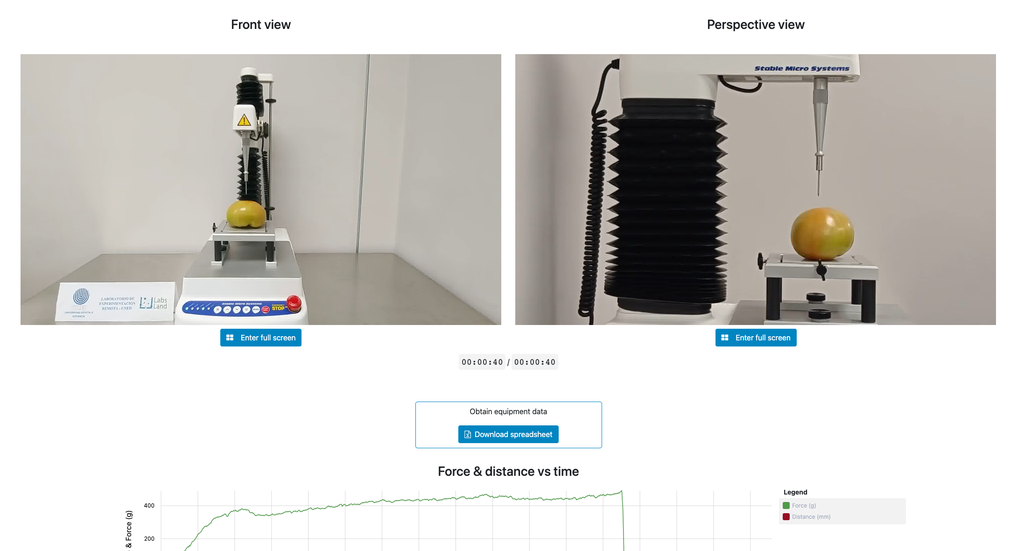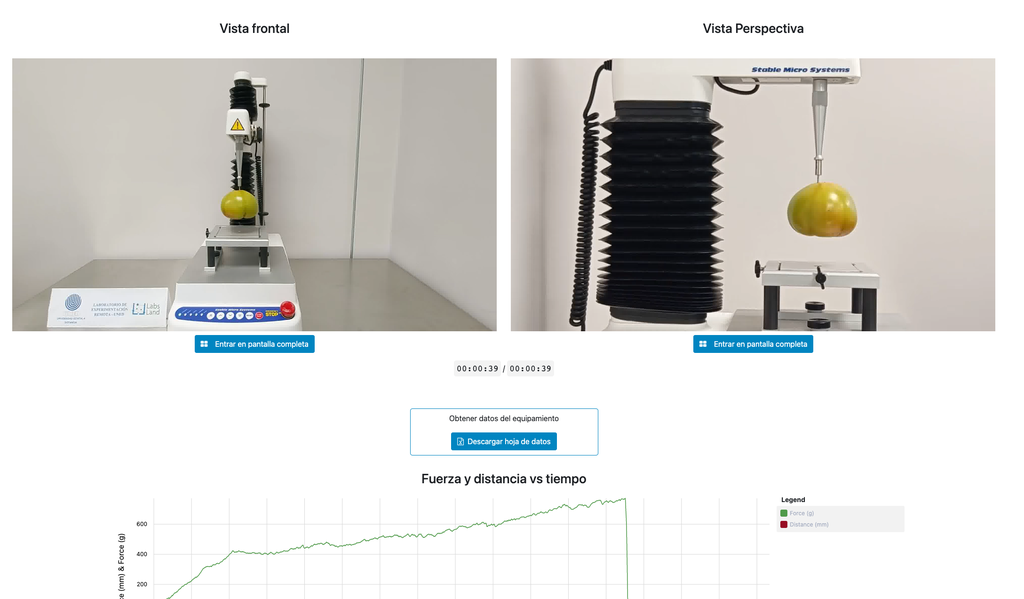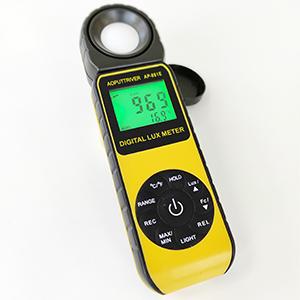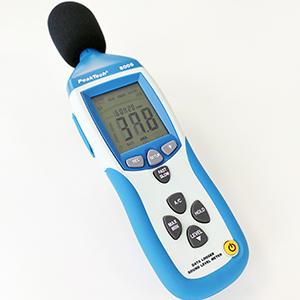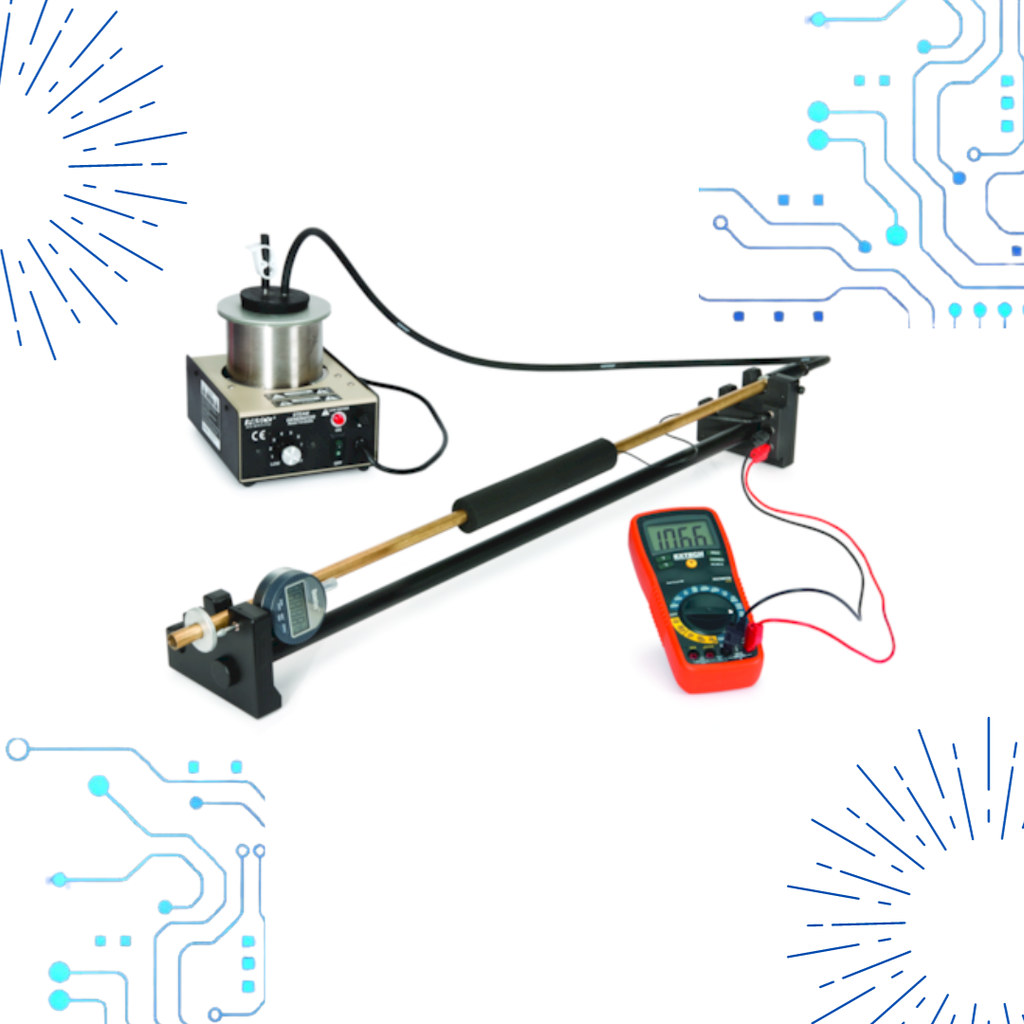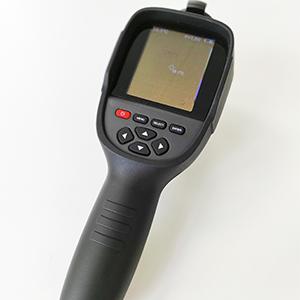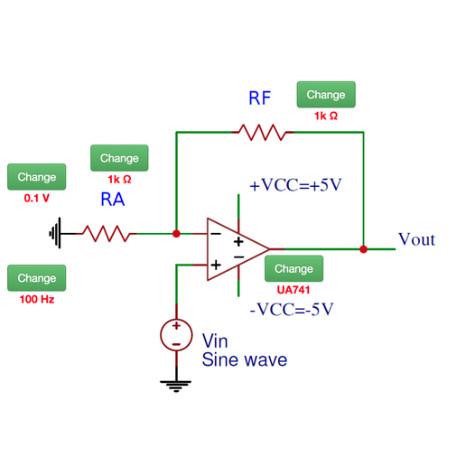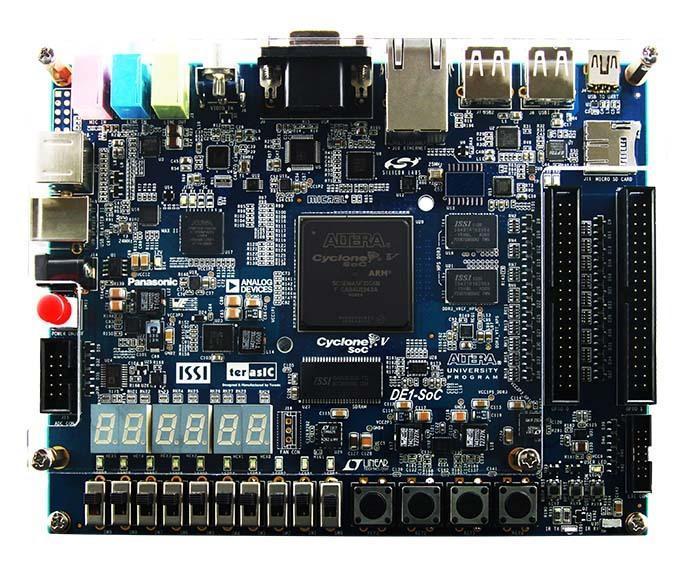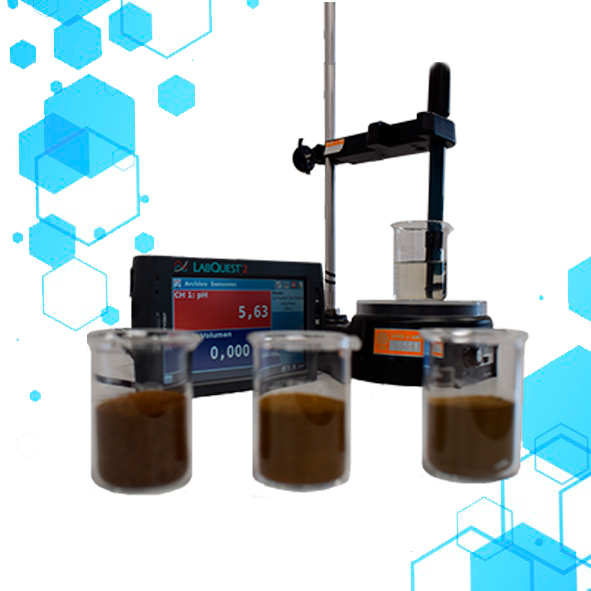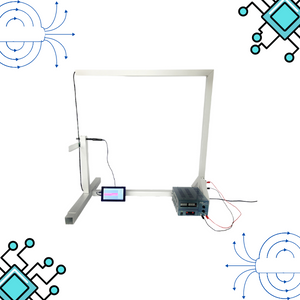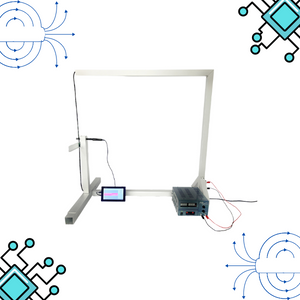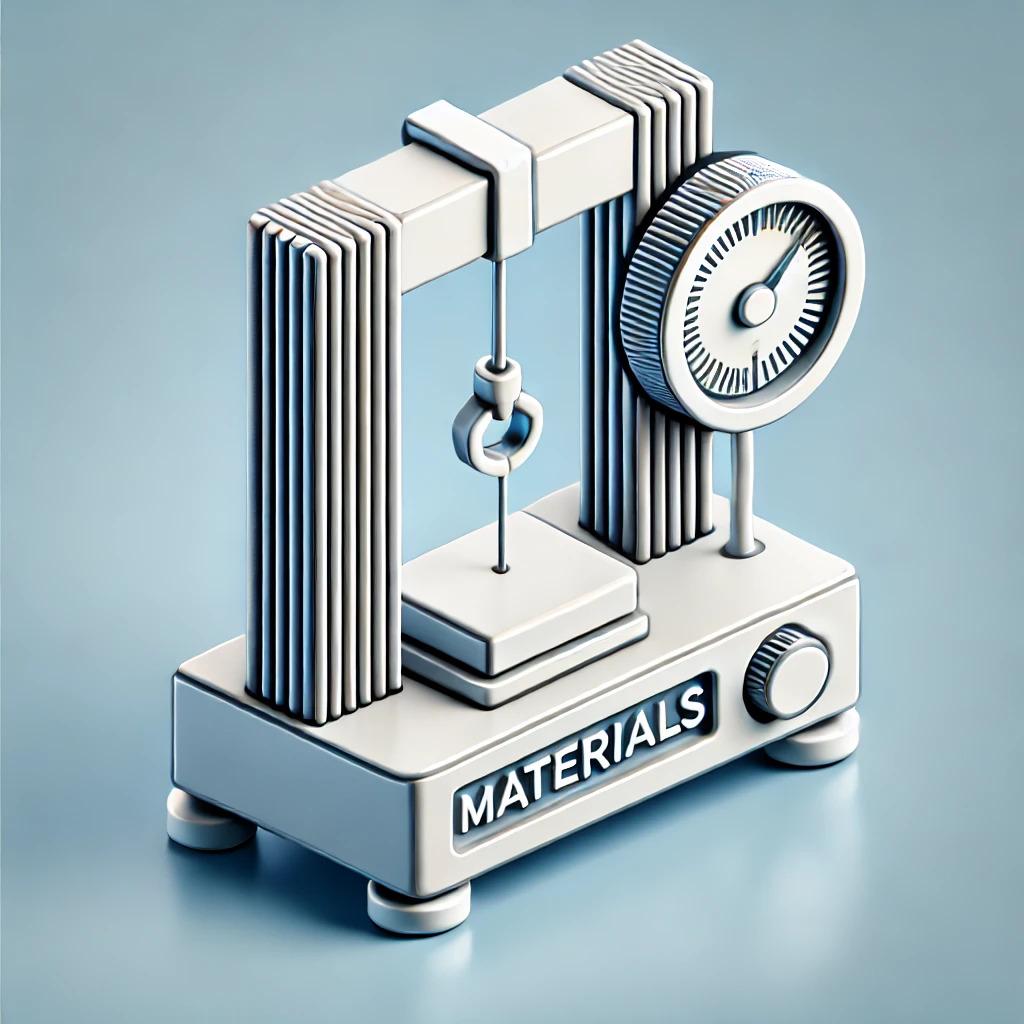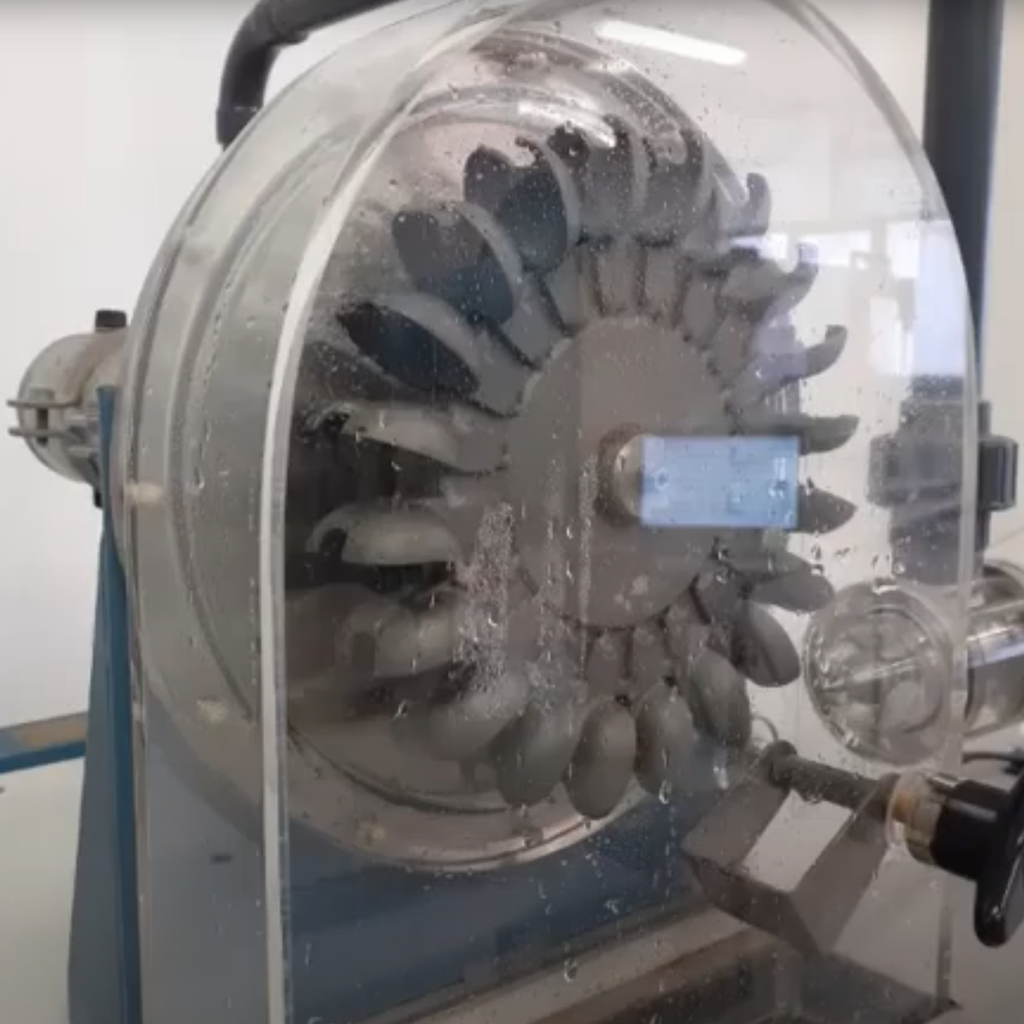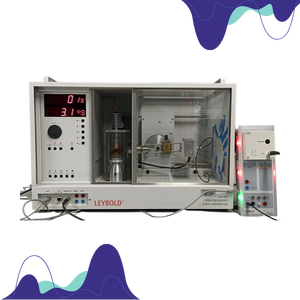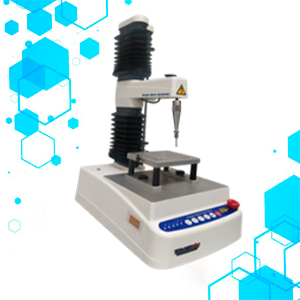Get access now to LCAL2005: Engineering labs (ultraconcurrent)
For only:
$9.99One payment
6 months of access
Payment methods supported:
- DigiKey (Not available in every country)
- Credit or debit card
- PayPal
You need to create or use a LabsLand account to continue.
Remote access to 16 laboratories included:
Trying to buy multiple licenses for a class? Contact us for bulk discounts
What is LabsLand?
LabsLand is the global network of remote laboratories.
The equipment is always real, not a simulation.
You control the real equipment with webcams through the Internet.
Access now. No need to wait for an equipment to be shipped.
No hidden costs: all included. No accessories or shipping costs.
Very easy to use: the equipment is already working.
Rent it only the months you need for your learning.
How does LabsLand work?
LabsLand is a global network of real laboratories available online. Students (in schools, universities and life-long learning platforms) can access the real laboratories through the Internet, using their laptop, tablet or phone.
The laboratories are either real-time (Arduino, FPGAs...) located in different multiple universities all over the world. In certain fields (Physics, Biology, Chemistry) the laboratories are LabsLand Ultraconcurrent Laboratories, so the university has recorded all the potential combinations of what can be done in the laboratory (in some cases, several thousands) and make it available in an interactive way.
In every case, the laboratory is always real (not simulated), and available through the Web (you do not need to obtain any hardware, deal with shipping, etc.).
Check how a typical user session works in the following video:
3D Printer
In the 3D Printer Laboratory you will be able to choose among several different 3D printing settings, such as temperature and orientation, and observe the printing process and the results from different angles. You will be able to control the playback speed so as to be able to experiment faster than you would hands-on, and you can download the Ultimaker Cura project file to experiment further.
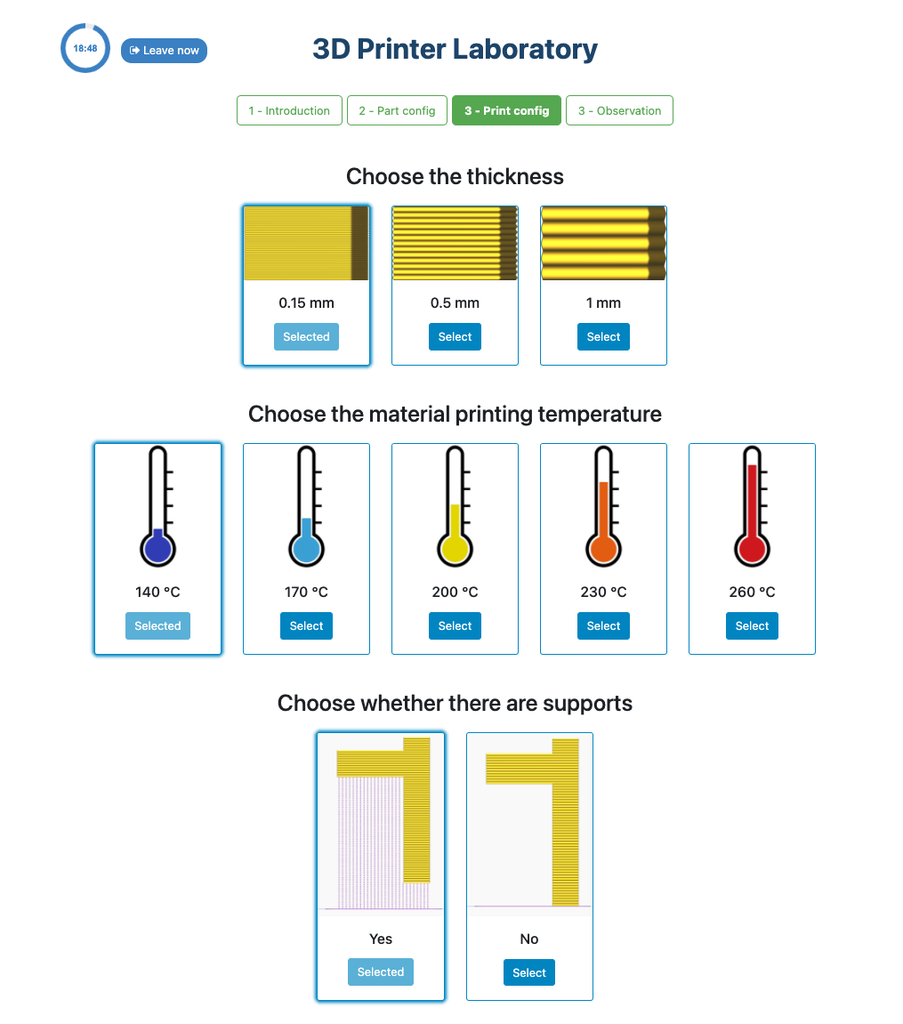
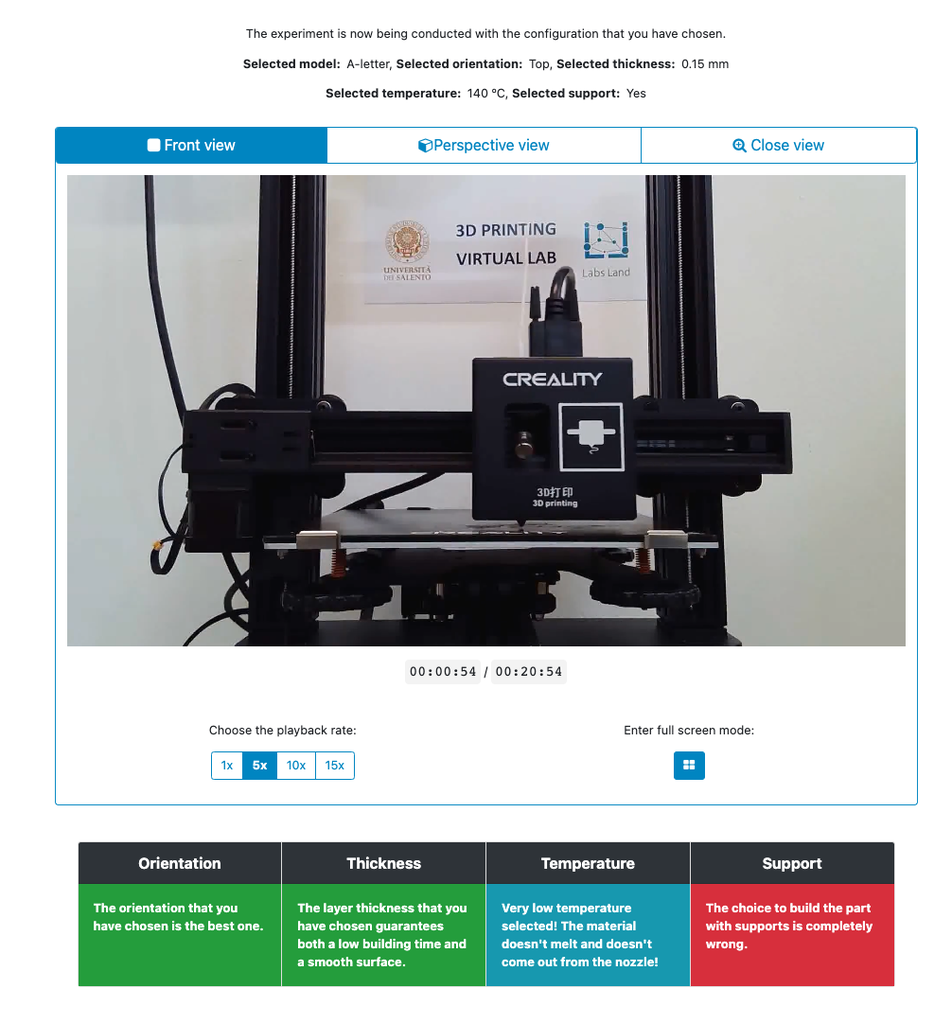
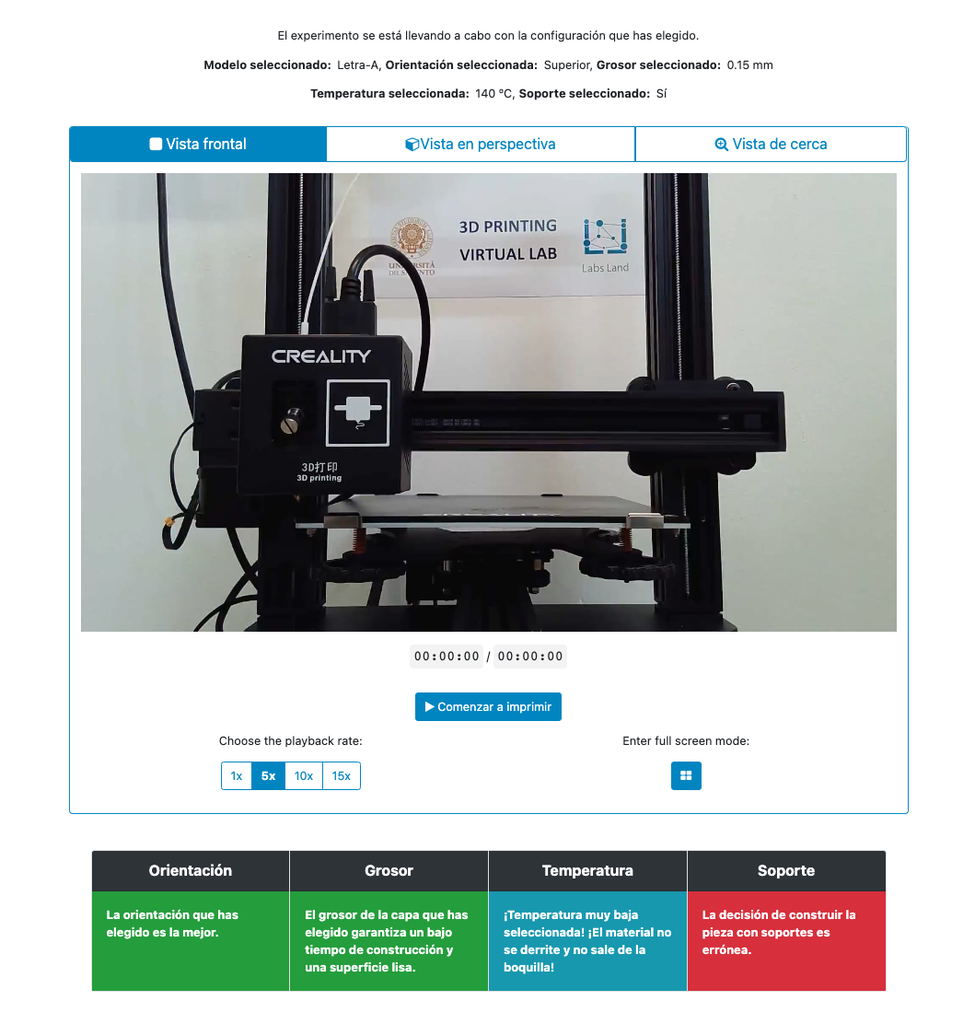
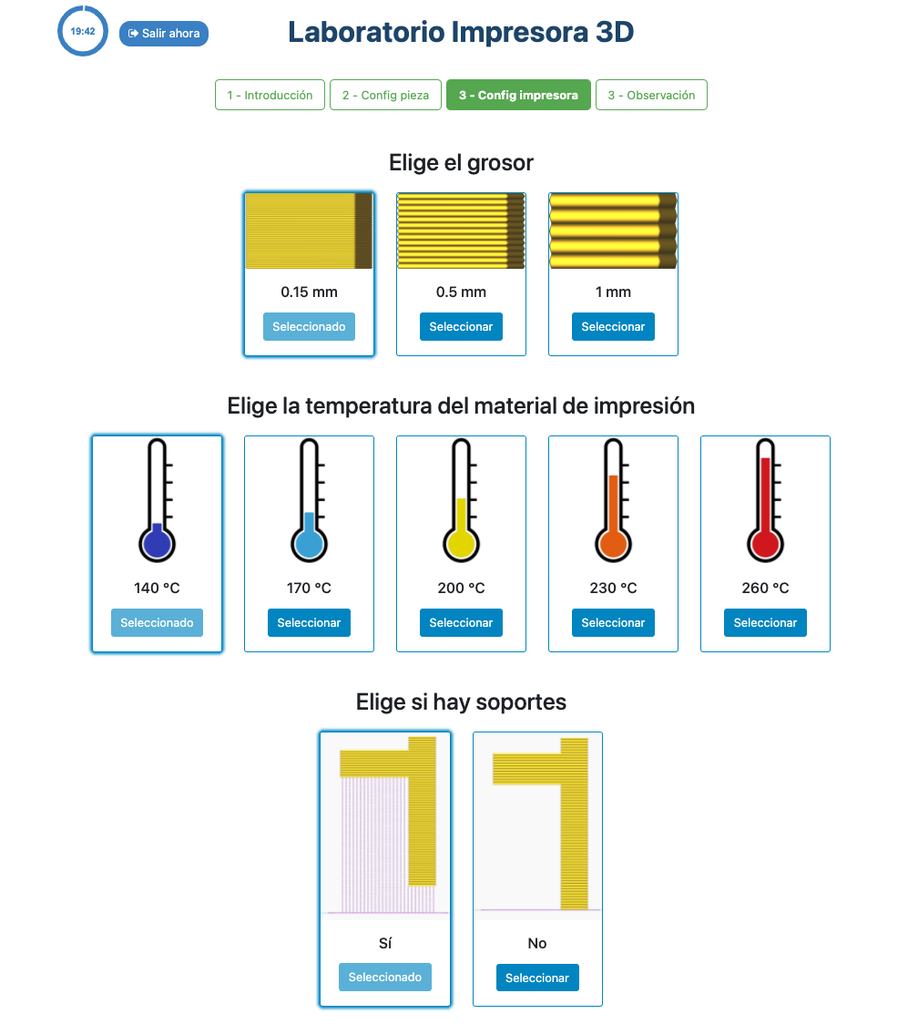
Luxometer
This device allows you to obtain real-time measurements of the lighting conditions of a built and operational space, and to propose different alternatives thanks to its results.
Access to know in more detail how to use this equipment at a professional level!
Sonometer
With this device you will obtain real-time values to evaluate the acoustic comfort conditions and the limit values associated to different professional activities.
Access to know in more detail how to use this device professionally!
Acoustic conditions are essential to guarantee the correct conditions of comfort in any built space. In order to measure noise, we will use the PEAKTECH 8500 sound level meter as a measurement tool.
This compact equipment offers a lot of versatility when it comes to taking measurements indoors and outdoors, and to instantly know the sound conditions produced by different sources in a room, space or workplace.
Through the scenarios set out, observe how the acoustic behavior in a space varies depending on the source of noise, the position of the measuring equipment, and the frequencies of each of the sounds obtained.
From these measurements, it is possible to propose improvement measures in the field of an Energy Audit.
Thermal Expansion
In this remote lab, students can select from three different materials—copper, brass, or aluminum. They can then apply heat to their chosen material and observe the resulting thermal expansion. This interactive lab allows students to explore the principles of thermal expansion in real-time, enhancing their understanding of how different materials react to heat. With precise control and detailed measurements, this lab provides a hands-on learning experience, accessible from anywhere, fostering deeper insights into material science and thermodynamics.
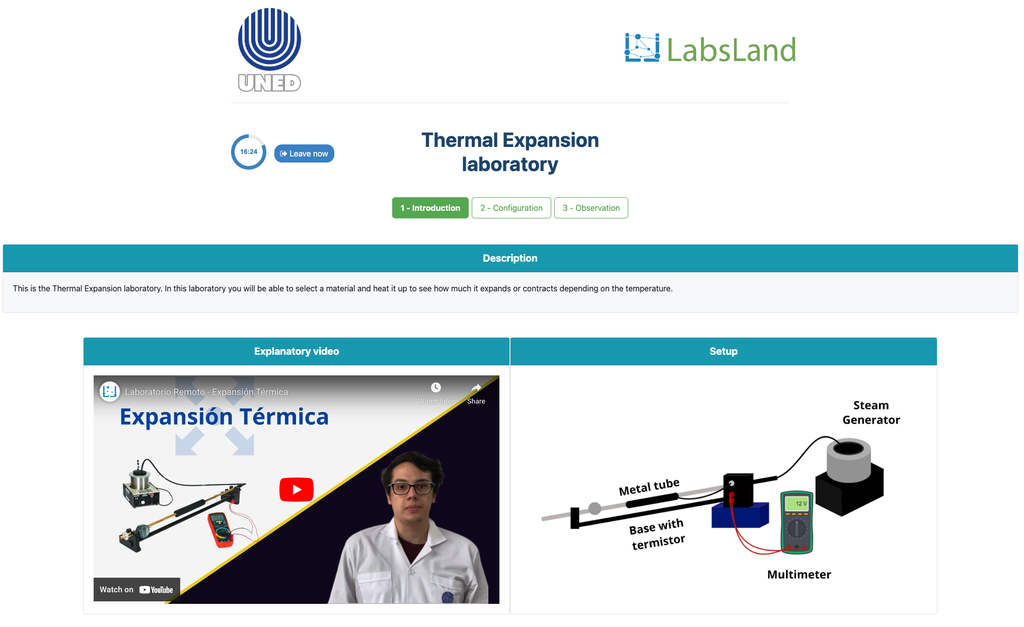
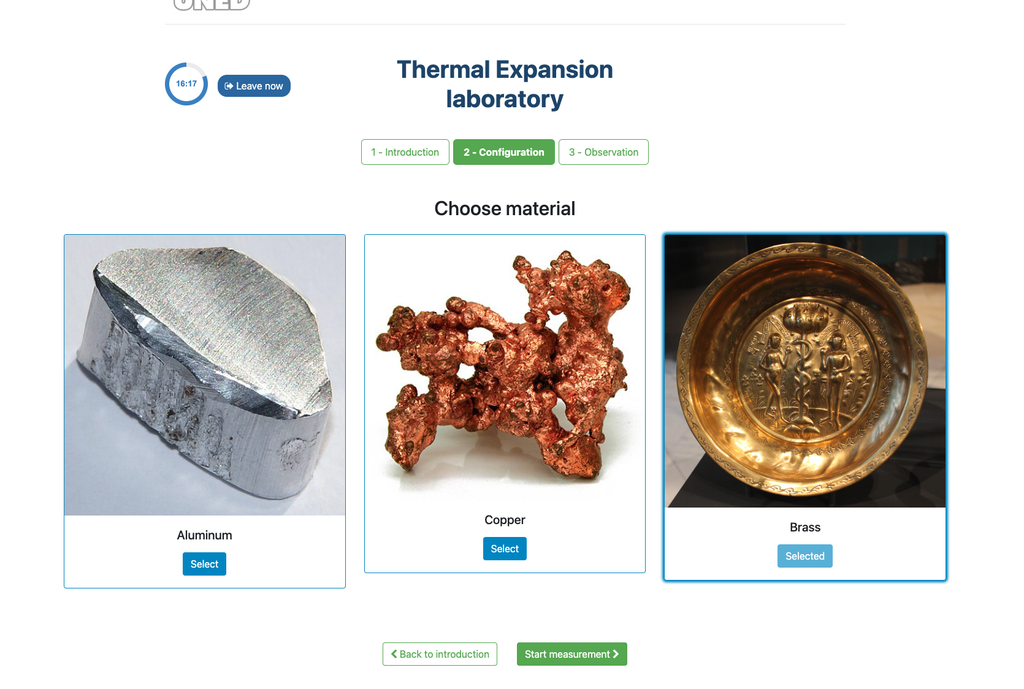
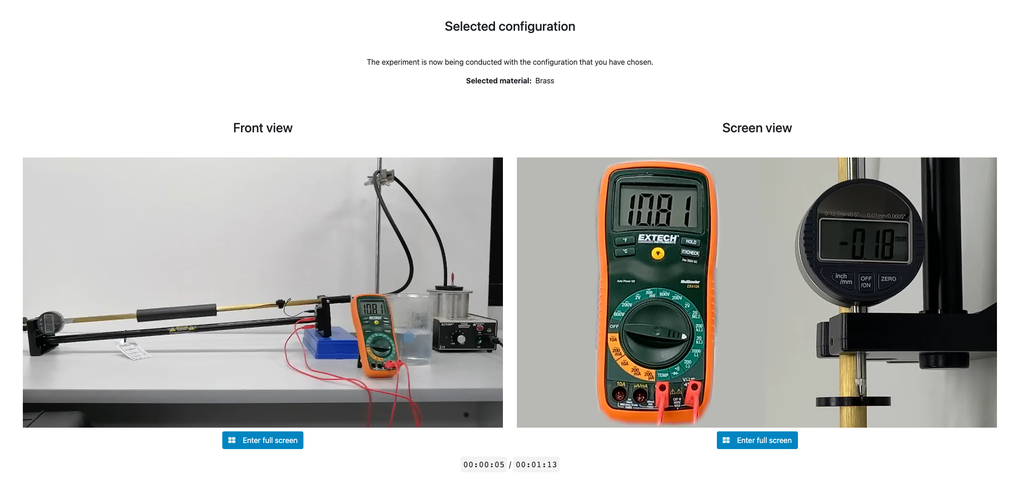
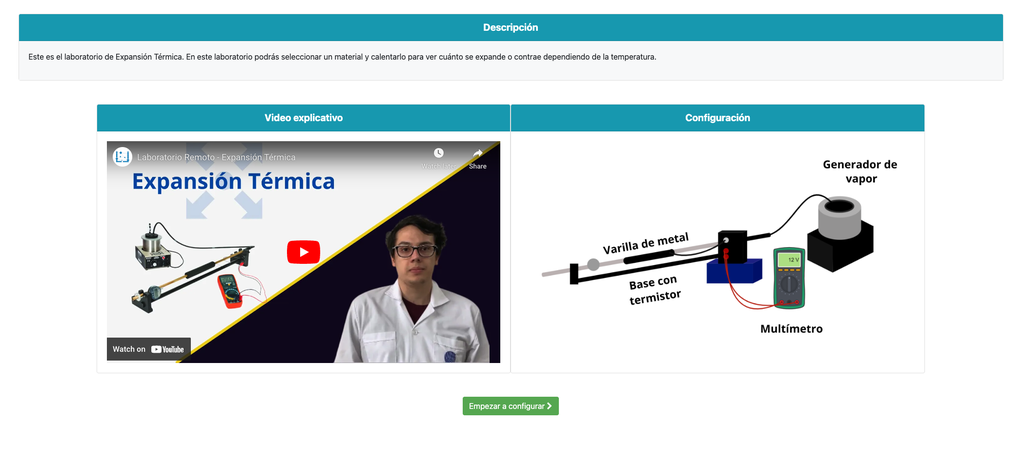
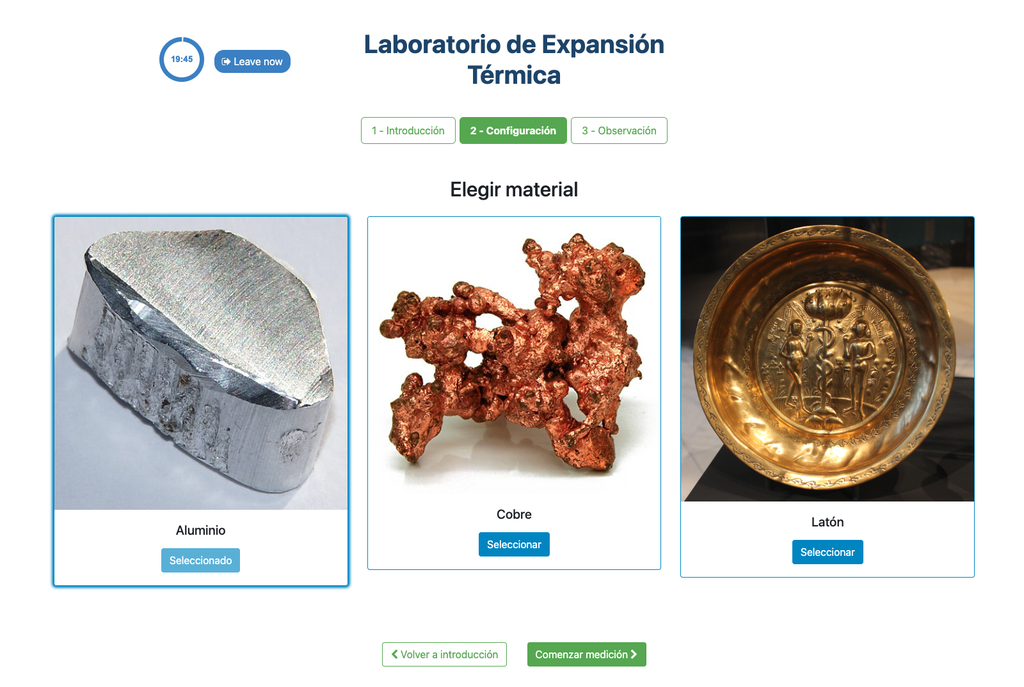
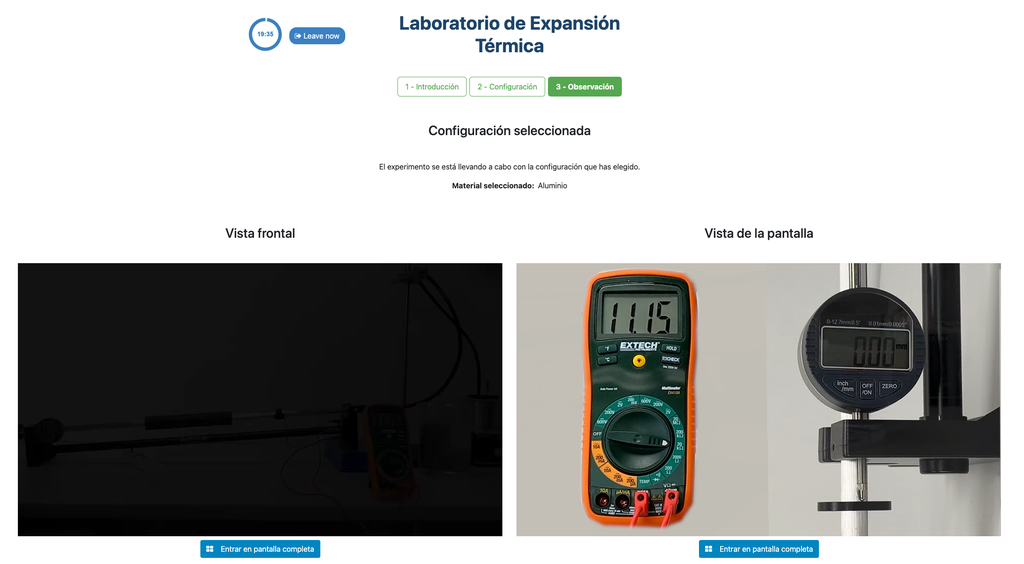
Thermographic Camera
This device allows you to conduct real-time measurements from surface temperature conditions, to detect potential construction issues or to detect functionality issues in the premises."
Access to know in more detail how to make use of this equipment at a professional level!
Discover the measurements taken with a HTI HANDHELD 35200 thermographic camera.
This compact device offers much versatility for taking surface measurements and for instantly knowing the thermal conditions of a build element, a window, a device...
Observe through the proposed scenarios how the thermal behavior of a building is critical for drawing conclusions, and to propose improvement measures in the Energy Auditing area.
Centrifugal Pump
Centrifugal Pumps are used throughout many areas to transport fluids. Its rotational energy typically comes from an engine or an electric motor.
In this laboratory you will be able to access and control such a pump, which is set up in a circuit that can be configured through several valves. The valves can configure it in a series or in a parallel configuration. It is also possible, under certain configurations, to observe the effects of cavitation.
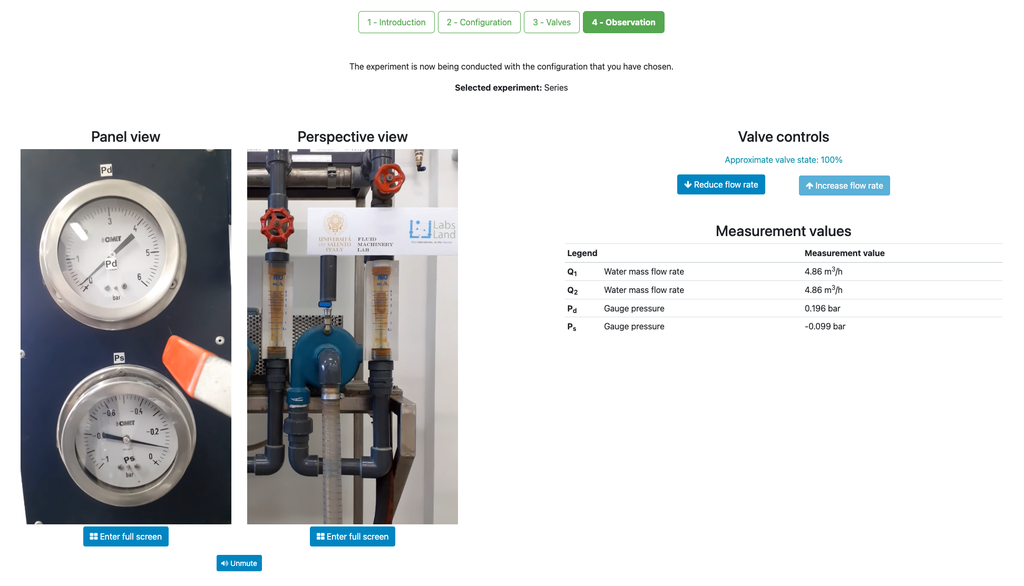
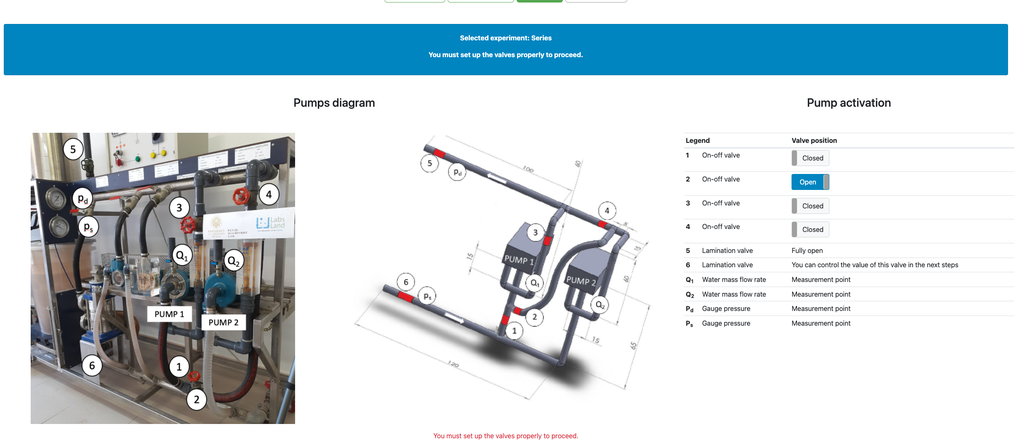
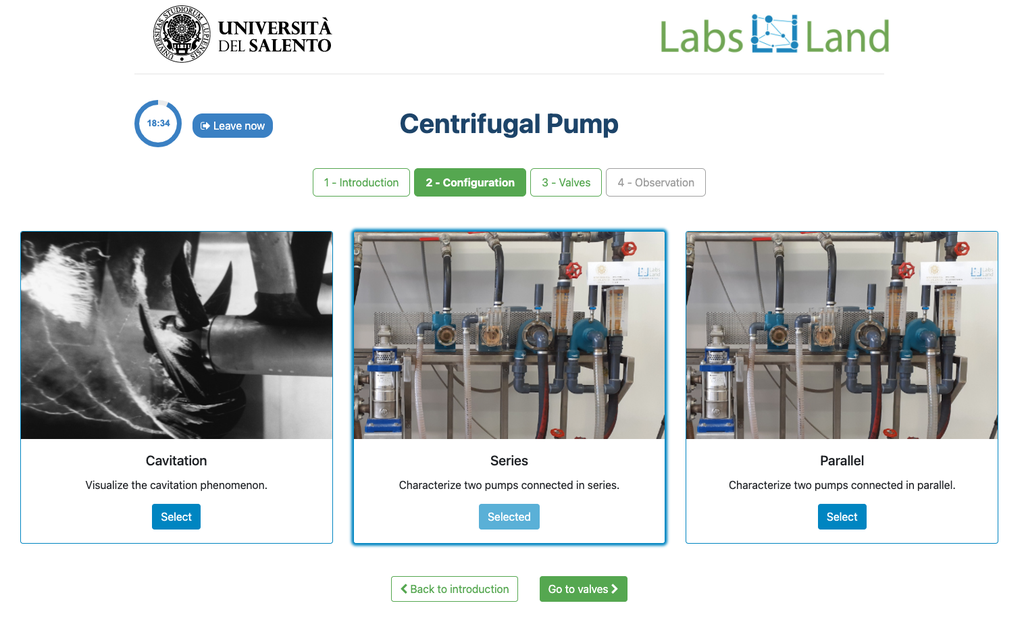
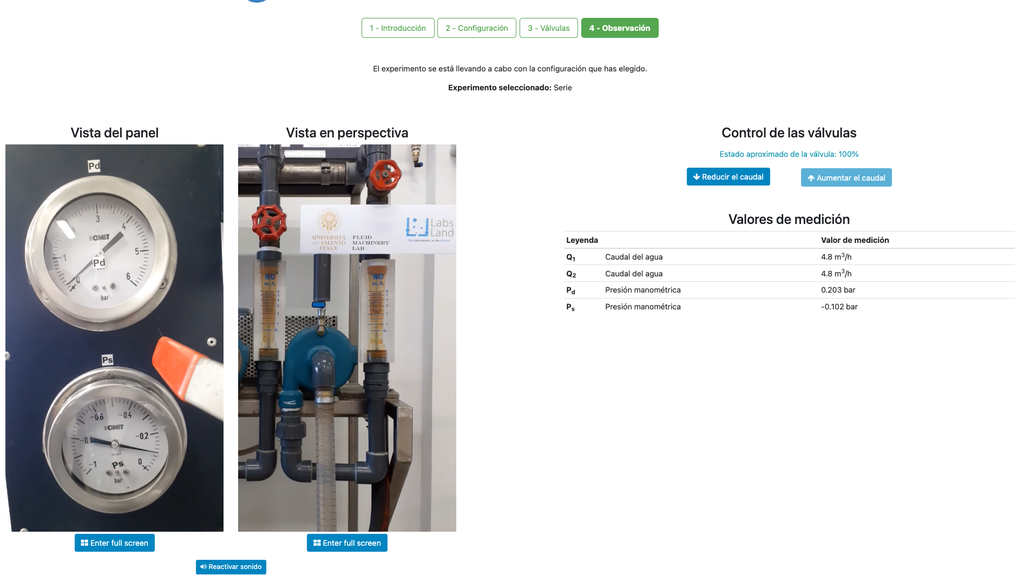
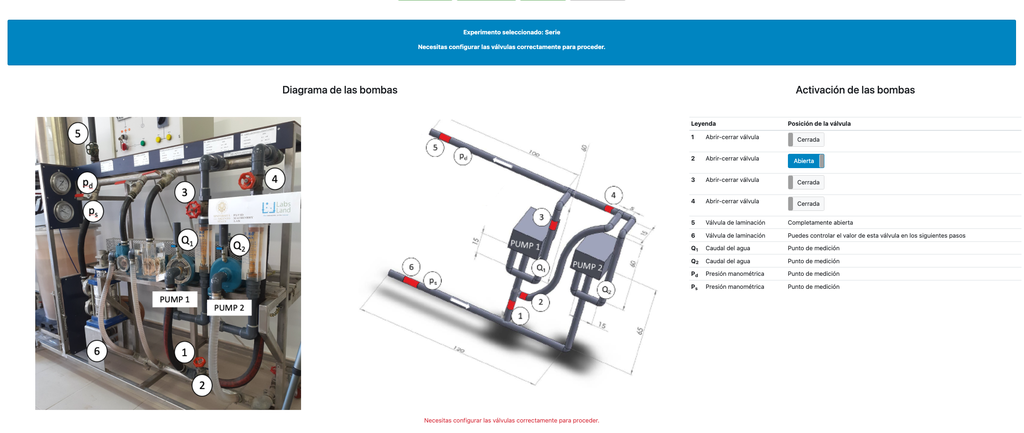
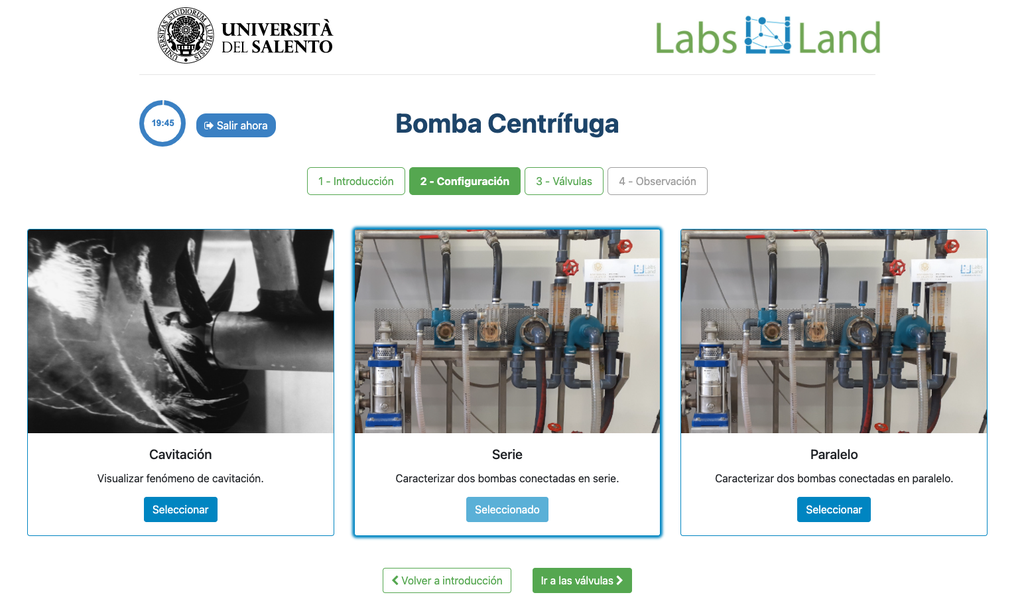
Common circuits
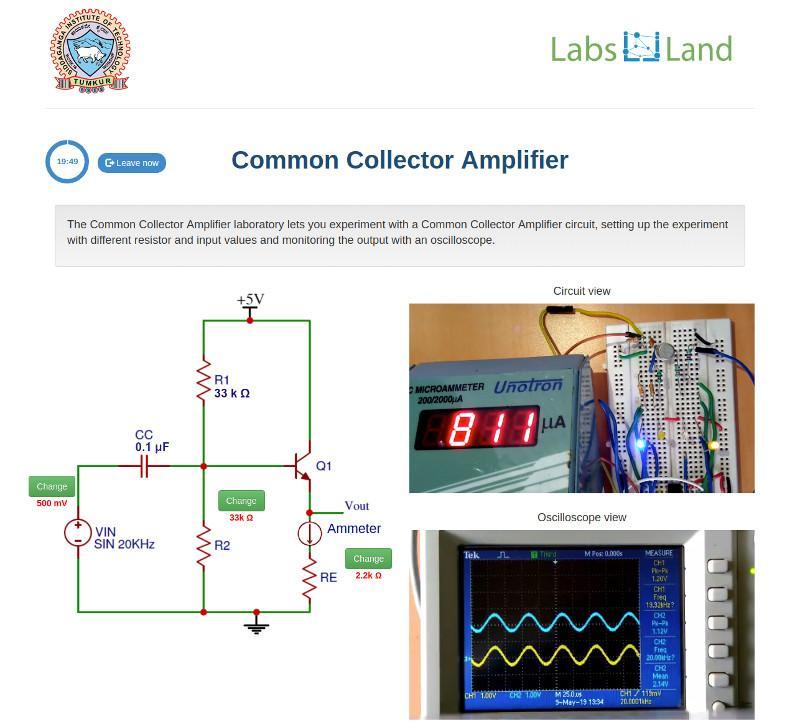
Digital Trainer
Summary
The Digital Trainer laboratory is designed towards students that are starting with digital logic, truth tables and Boole's Algebra.
During the activity, the student sees an Intel FPGA that implements a series of simple truth tables. The student can interact with the FPGA devices to vary the inputs to the system through switches, and observe the outputs through LEDs. The challenge is to determine which logical operator the FPGA implements in each case (e.g. AND, NAND...).
Further details
The activity is designed to be relatively simple and straightforward, but at the same time to be engaging for the students. It is designed in a game-like style, and it is based in real hardware (FPGAs). That way, it is not only useful to introduce and obtain familiarity with digital logic, but also it allows students to start seeing the future uses of that knowledge, interacting in a superficial way with FPGA devices, of the same kind that are used in industry.
Interaction with the FPGA devices does not add complexity, since students don't need to program them; they already implement a black box logic (which is precisely the point of the activity).
The laboratory is originally based in an activity that Intel Corporation frequently conducts in its seminars, both hands-on and remote, using their Intel DE1-SoC, Intel DE2-115, or other types of FPGAs.
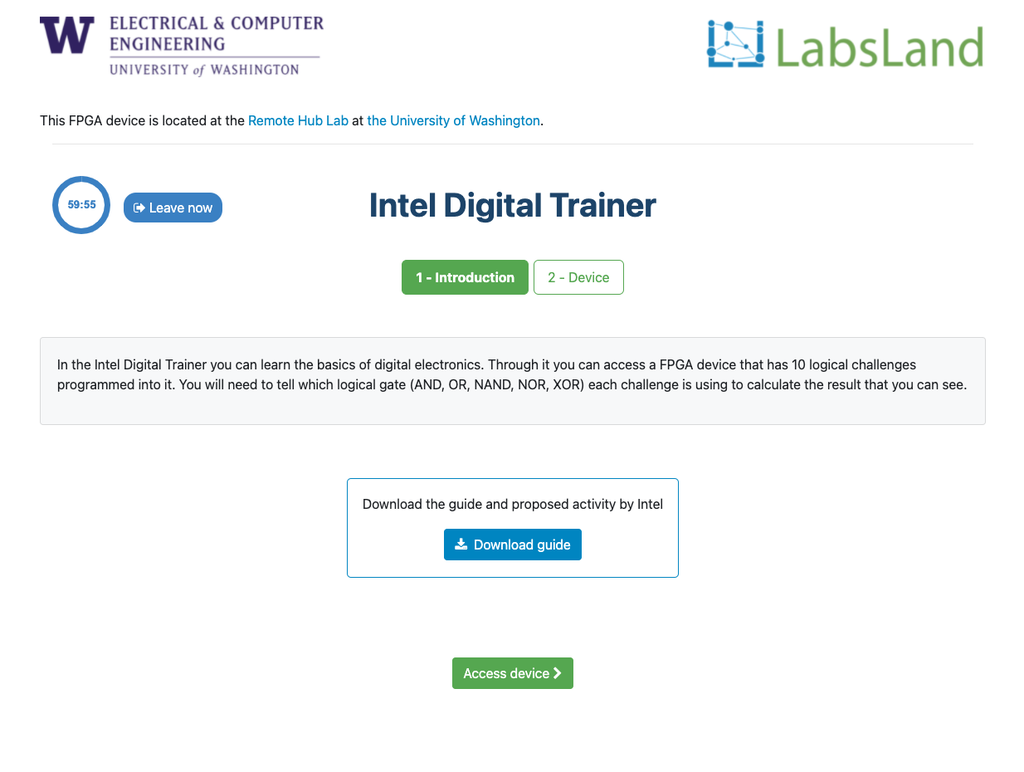
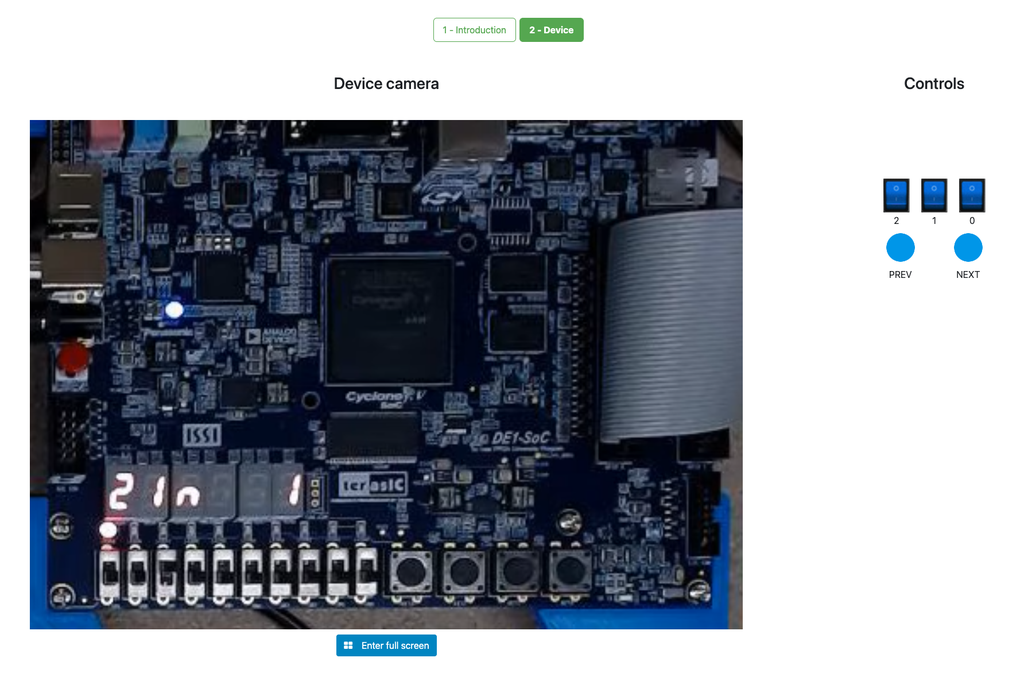
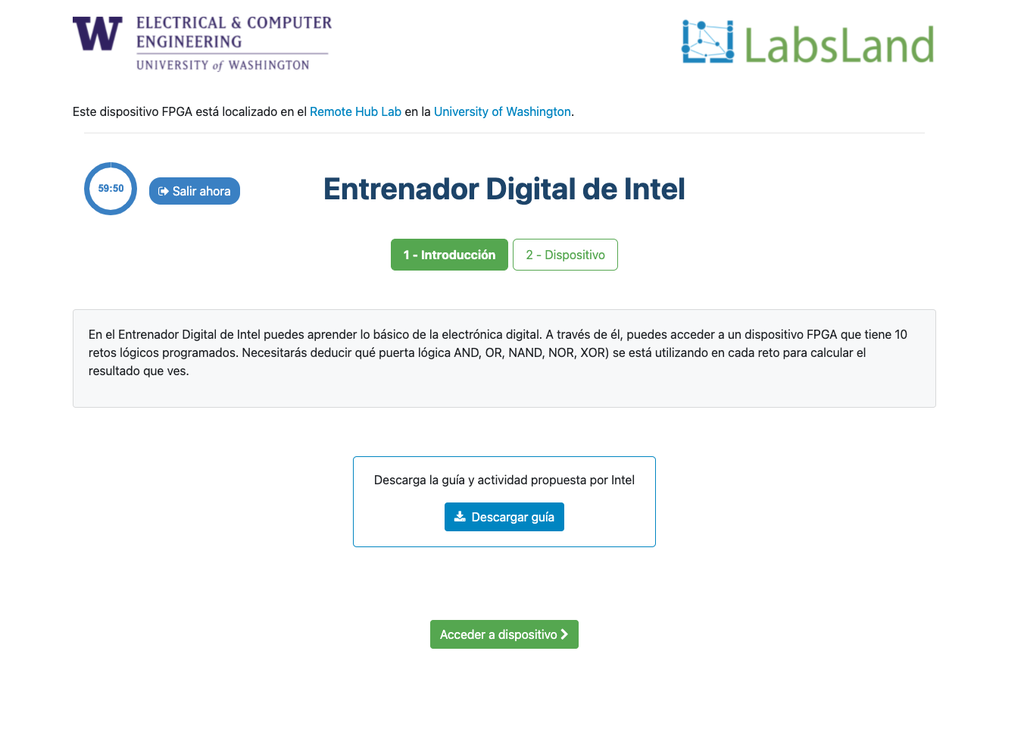
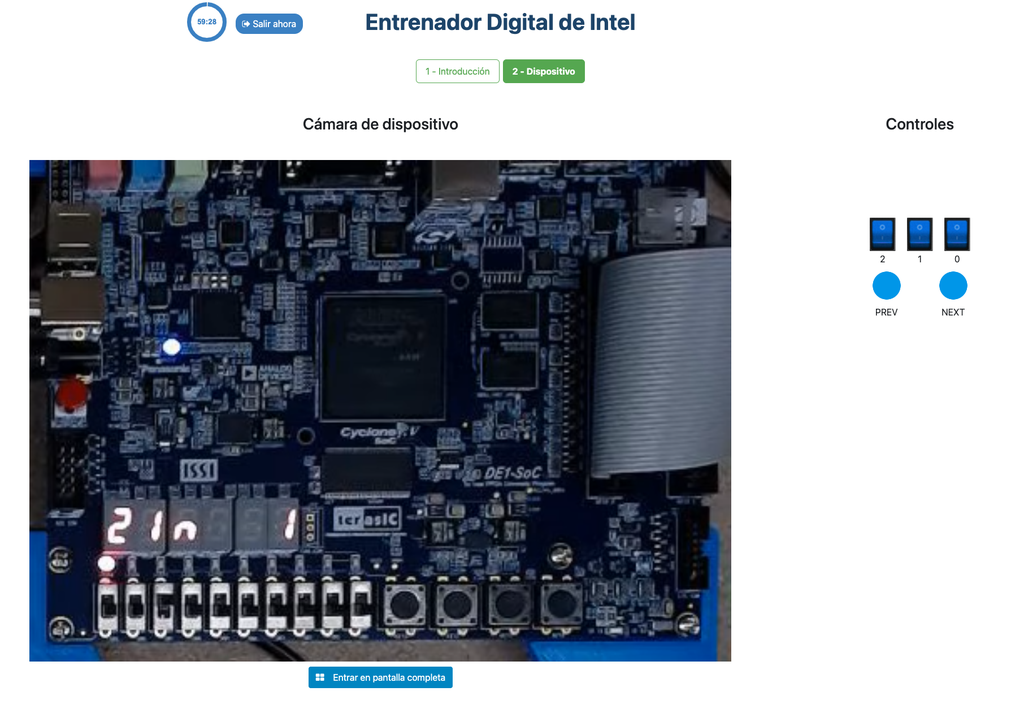
Exchangeable Acidity of Soils
The acidity of soils can occur due to various processes that promote a pH reduction. These processes occur naturally or by human action. The main sources of soil acidity are associated to hydrogen ions (H+) and aluminum ions (Al+3) in the soil's solution. Exchangeable acidity is determined through the use of neutral salts solutions such as potassium chloride (KCl). The acid ions (aluminum and hydronium) that are held in the colloidal fraction of the soil, that in the presence of a displacing ion (K+), makes those enter the soil solution. Afterward, that solution is titrated with a sodium hydroxide solution of the exact concentration to reach the last point of the neutralization reaction using phenolphthalein as an indicator.
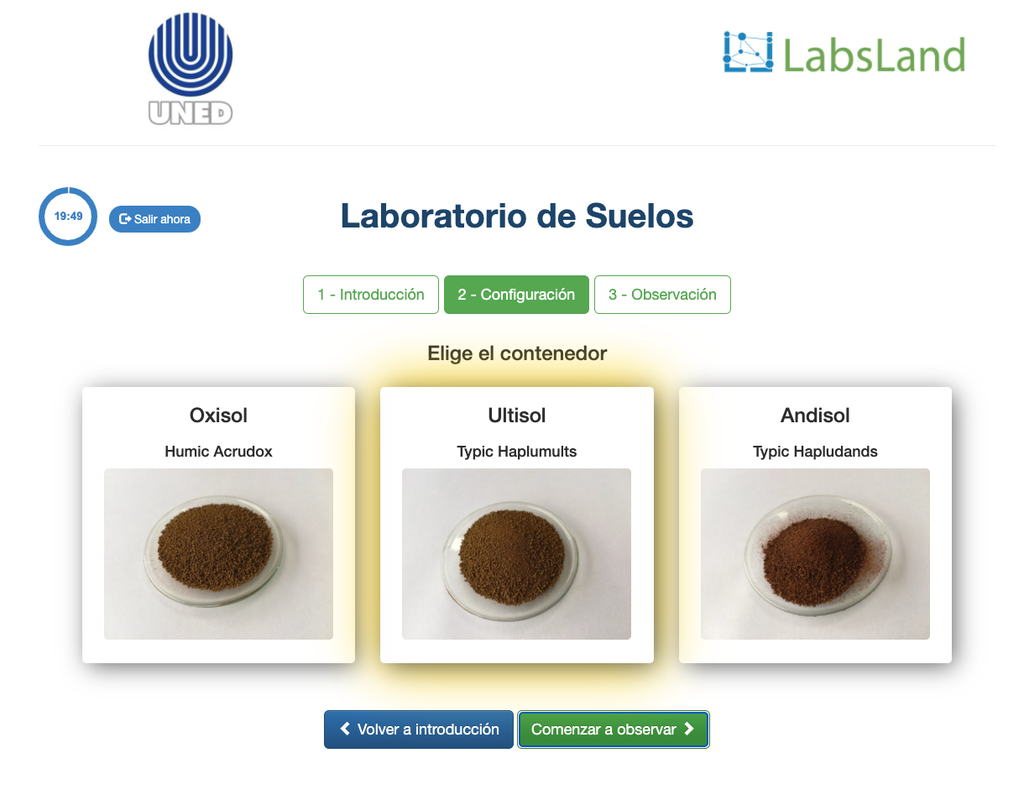
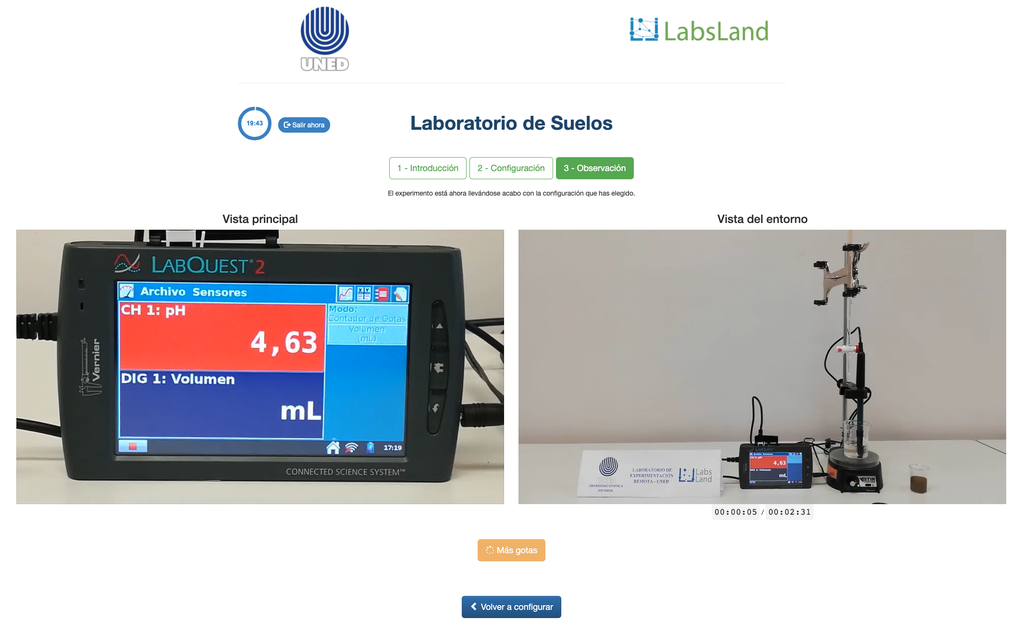
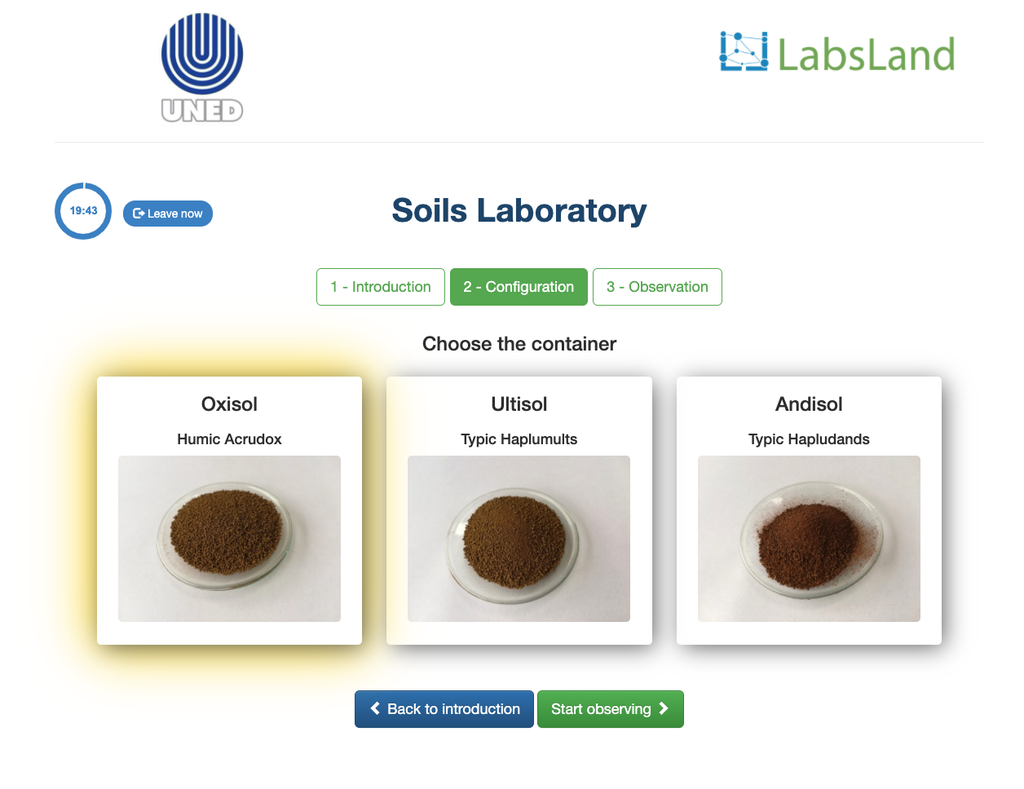
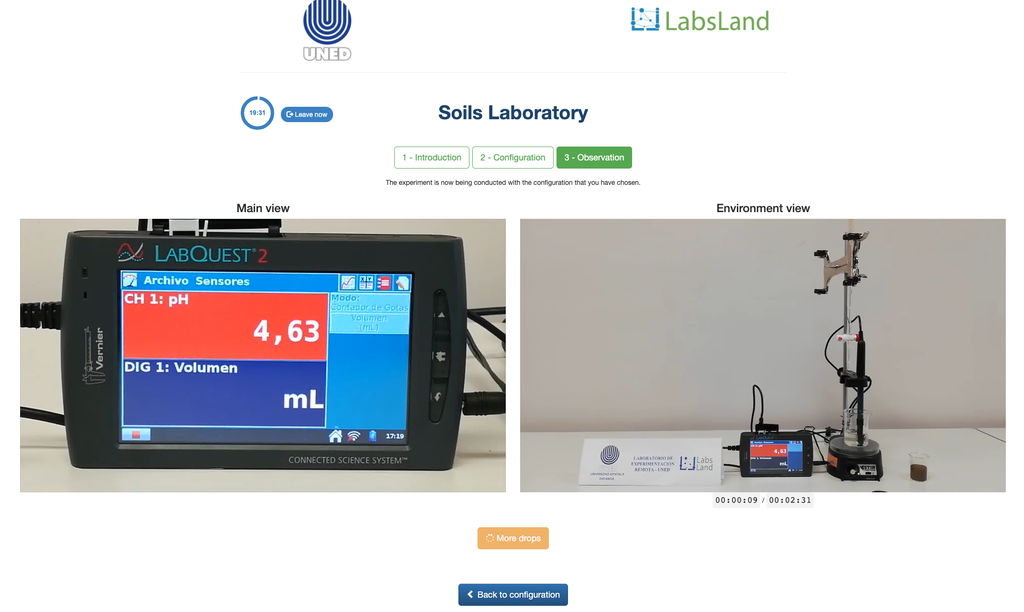
Flowloop
Summary
The Multi-Phase Flowloop laboratory lets you carry out experiments to visualize flow patterns of multi-phase systems that develop in production tubing in possible real-life scenarios. Through variation of the water flowrate and the angle of the tubing itself, you can appreciate the forming of different flow patterns or “cuttings” depending on the chosen values.
Further details
Multi-phase systems are found in various industrial scenarios, not being an exception the oil and gas industry. The prediction and determination of the flow pattern in the production tubing is of great importance since this is directly involved with the optimization of the production itself.
Mixtures of hydrocarbons, water, sediments and gases found in reservoirs manifest different behaviors during their transportation to the ground’s surface. Predicting such behaviors enable a better understanding for adequate choice of pumping machinery and pipeline setups for a successful transport to their final processing facility. The Multi-Phase Flowloop test unit helps achieving a better predictiveness of how multi-phase systems behave in real life for further investigation. This enables the user a better comprehension and visualization of how multi-phase transportations react under variable production rates and mixture proportions.
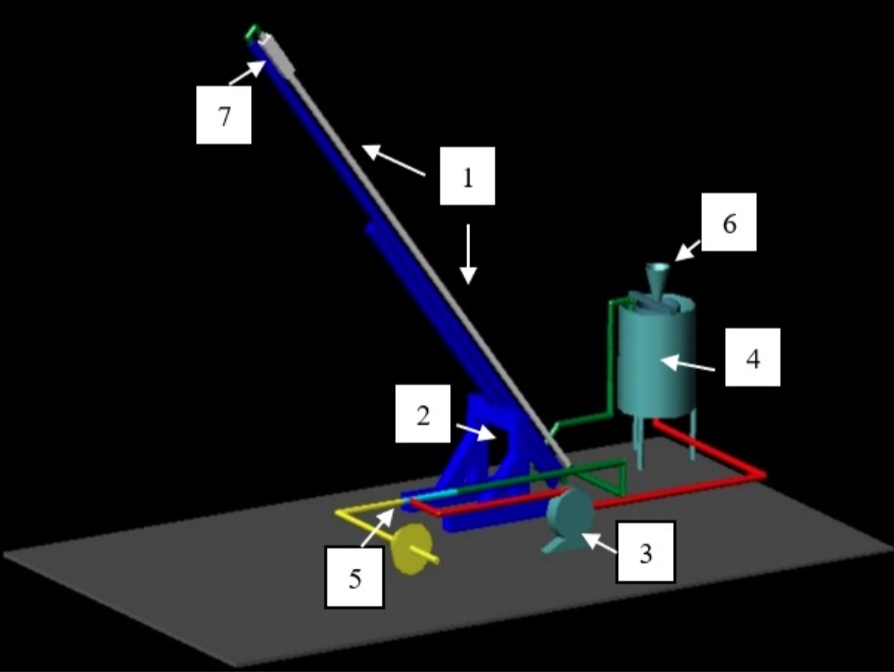
- The test section is a transparent 0.04m internal diameter straight Plexiglas pipeline (1) with a length of 6m.
- This pipe is supported by a hydraulic screw-jack (2) and a carbon steel beam, the system can be inclined up to an angle of 90 degrees from its horizontal ground level.
- A stainless-steel centrifugal pump (3) connected to the main tank (4) provides water to the system. Equipped with an electromagnetic induction flow meter and by the rotational speed of the pump, the rate of the water flow can be adjusted to the desired values.
- In order to develop various phase-flow patterns, air can be injected into the water stream via an air-water mixer (5).
- A hopper (6) fitted to the top of the water tank serves to feed another phase, representing the solid sediment
- A high-speed camera (7) mounted at the Plexiglas pipeline records the flow.
The Multi-Phase Flowloop laboratory lets you carry out experiments to visualize flow patterns of multi-phase systems that develop in production tubing in possible real-life scenarios. Through variation of the water flowrate and the angle of the tubing itself, you can appreciate the forming of different flow-patterns or “cuttings” depending on the chosen values.
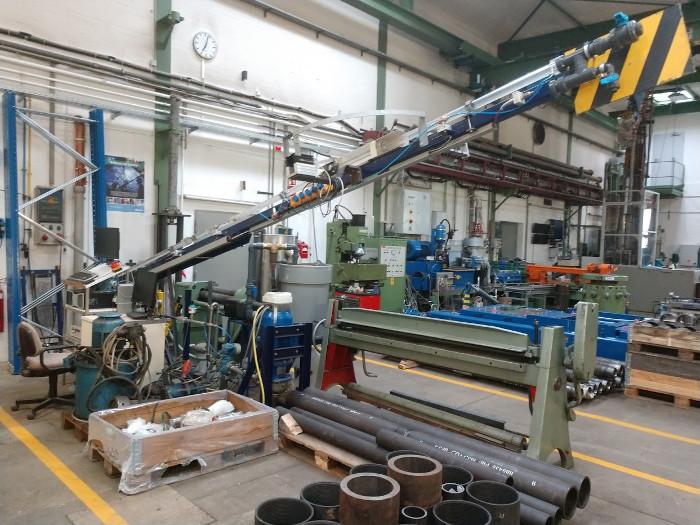
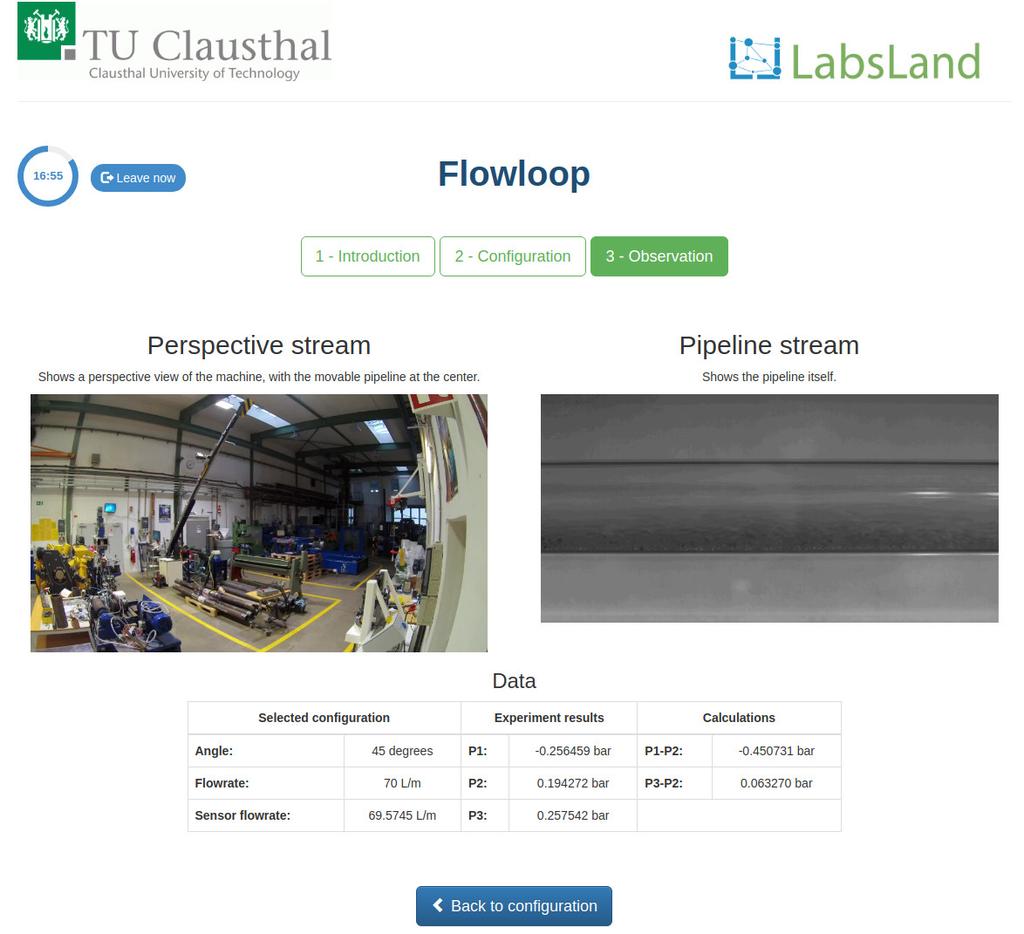
Magnetic Field
Summary
This lab facilitates magnetic field experiments with a steady current in a straight conductor, whose intensity can be adjusted. A movable Hall sensor measures the field's magnitude at various distances. In this version of the lab students manually record the data.
Versions of the lab
In this version of the lab, graphs are not included and data download by the student is not permitted. Instead, the student must collect the data from the sensor readings and the distance to the conductor, similar to a traditional practical experiment. This allows them to construct their own graphs and create custom spreadsheets for data analysis and conclusion drawing.
There is an alternative version of the lab (Magnetic Field with Graph) in which a graph is provided at the end of each experiment and students are allowed to download the data onto a spreadsheet. This version may be especially useful for those students who prefer more direct access to the data collected during the experiment.
Magnetic Field
Moving charged particles have the ability to create a magnetic field around them, which can interact with other moving charged particles. In this context, a conductor through which an electric current flows generates a magnetic field in its surroundings. This physical phenomenon is fundamental in numerous technological advances that we find in our daily lives, such as electric motors and various electronic devices.
Potential Experiments
Numerous experiments can be performed with our lab setup. Users can observe how the strength of the magnetic field varies with the current that generates it. They can explore the fundamental principles of electromagnetic induction, visualizing the link between a changing magnetic field and the induced electric current. By adjusting the probe's distance from the field, they can experimentally verify the inverse square law of magnetism, delving into the intricate relationship between field strength and distance.
Learning Objectives
The lab may cover the following learning objectives:
-
Understand the concept of a magnetic field and how it can be generated and measured.
-
Recognize the relationship between magnetic field strength and the current that generates it.
-
Grasp the principle of electromagnetic induction.
-
Comprehend and verify the inverse square law for magnetic fields.
-
Develop skills in data collection, analysis, and interpretation in a physics context.
-
Enhance their understanding of physical principles and their real-world applications.
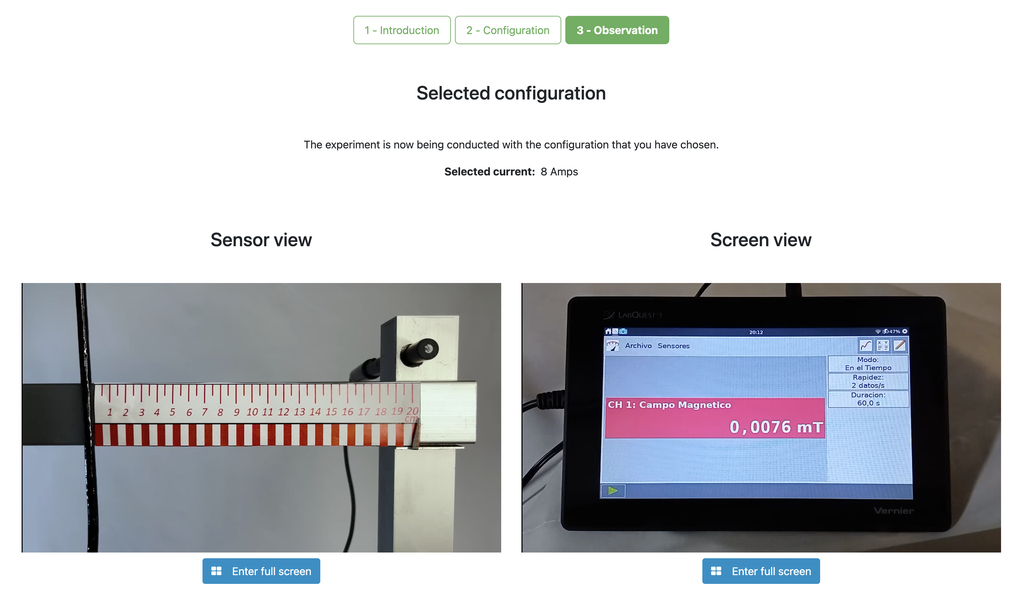
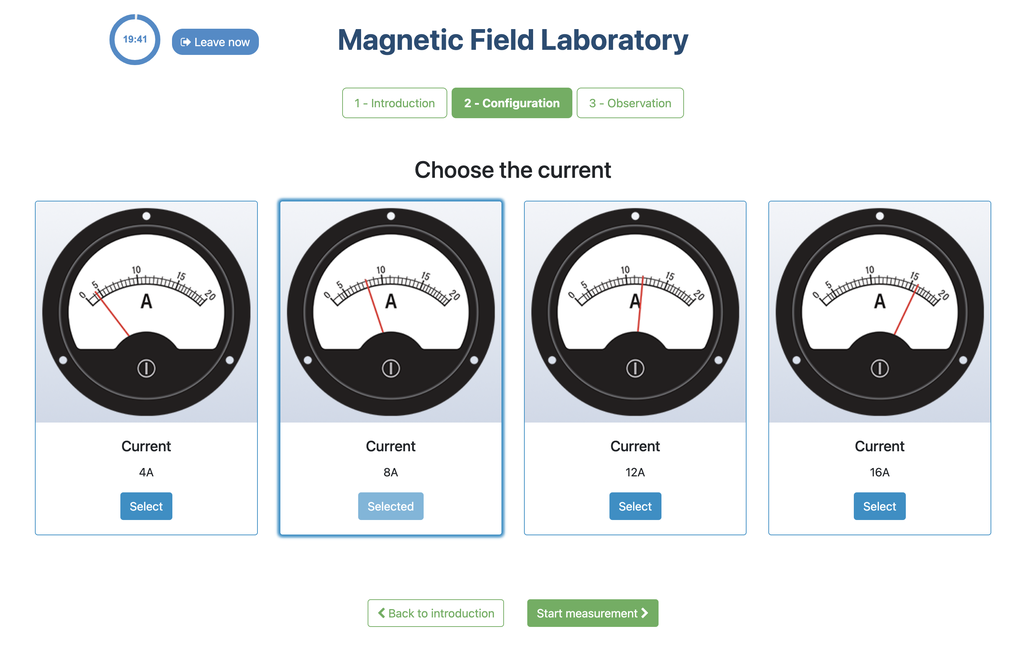
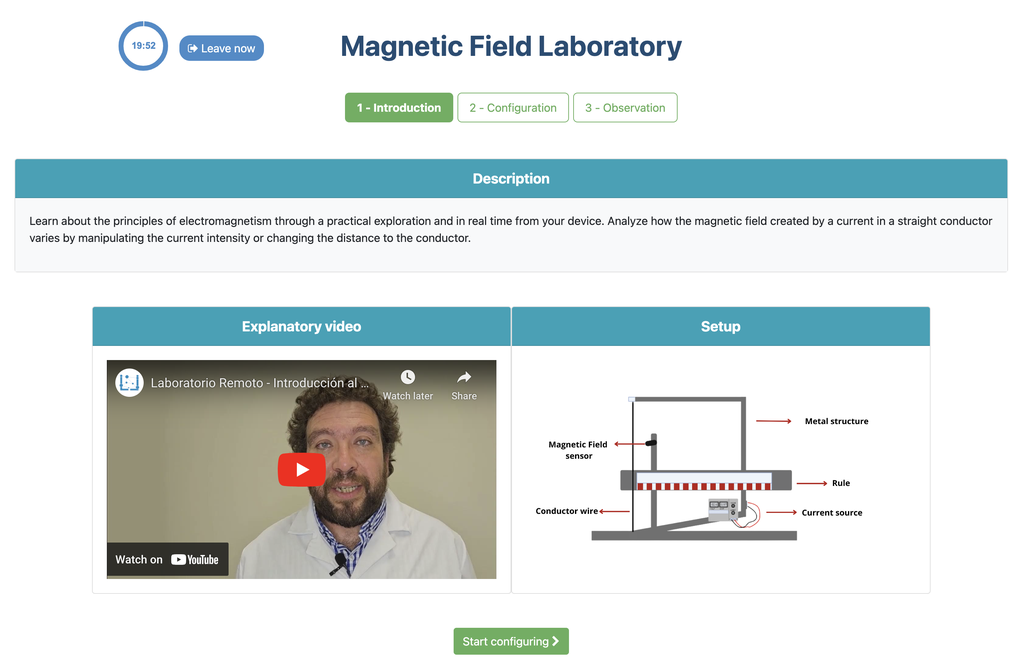
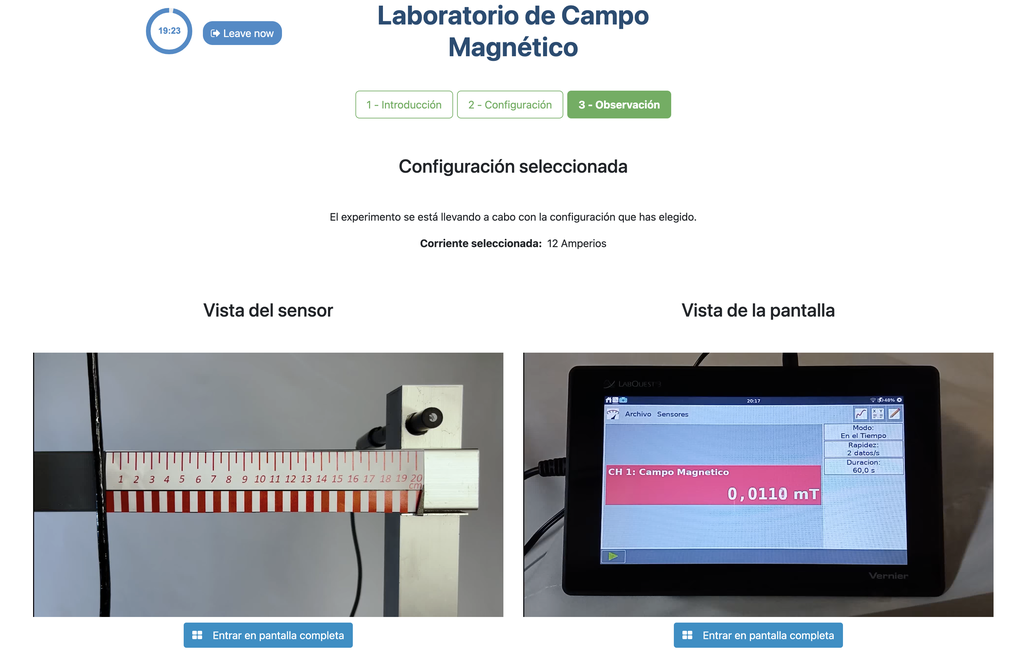
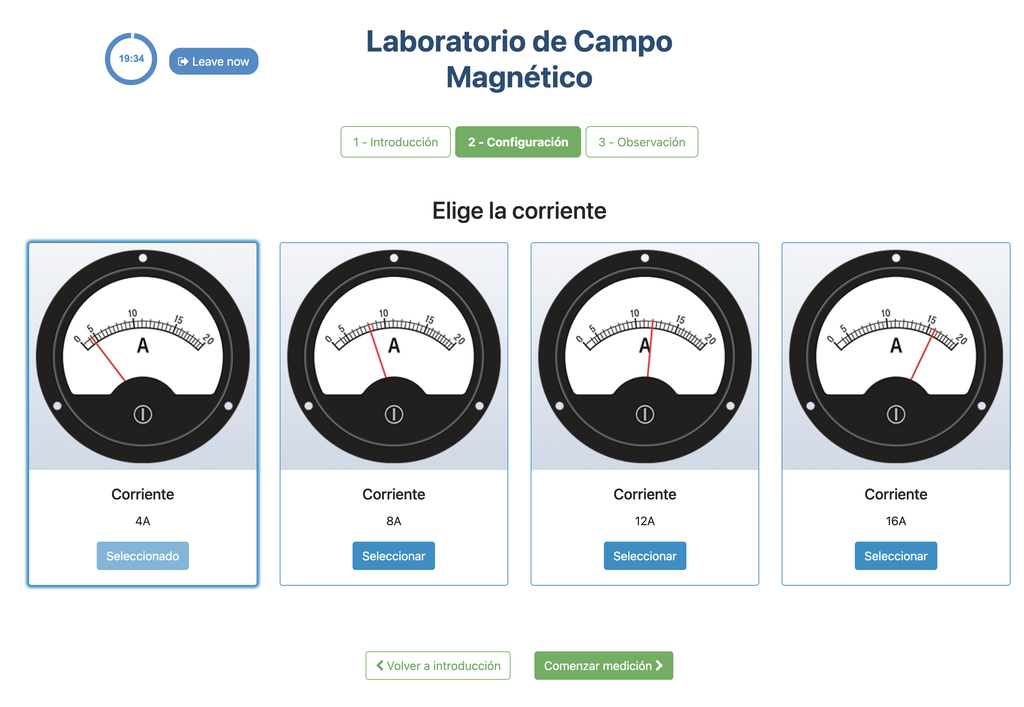
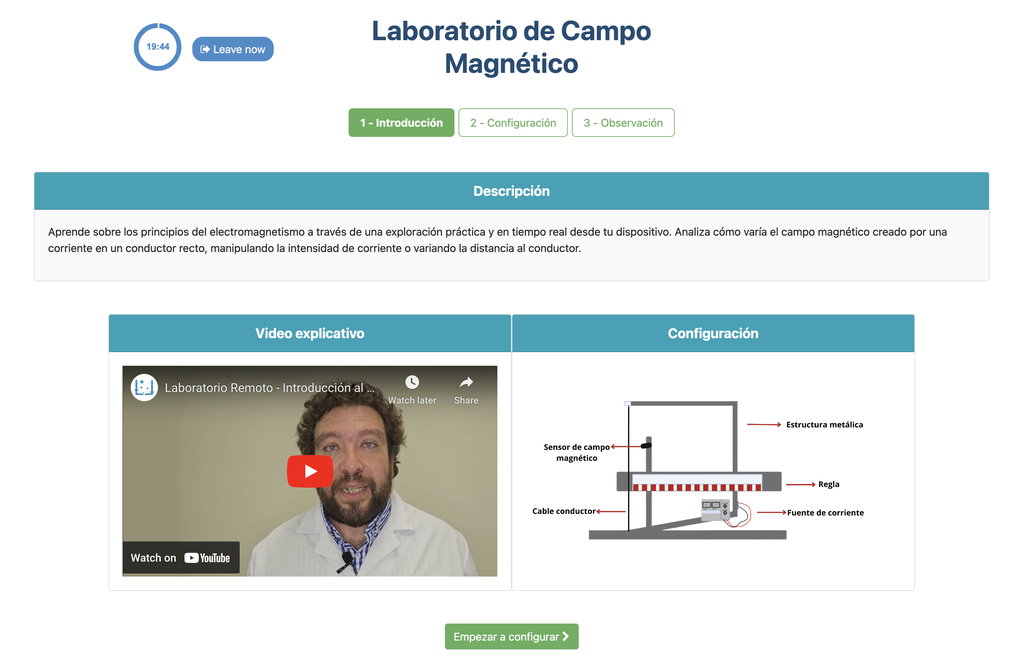
Magnetic Field (with plot)
Summary
This lab facilitates magnetic field experiments with a steady current in a straight conductor, whose intensity can be adjusted. A movable Hall sensor measures the field's magnitude at various distances. In this version of the labs students are shown a plot with the data and may download it for further processing.
Versions of the lab
This version of the laboratory displays a plot at the end of each experiment and allows students to download the data in a spreadsheet. This allows students to analyze the results without needing to gather and plot the data themselves.
An alterantive version of the lab exists (Magnetic Field) in which the plot and the data are not available. That way, in order to analyse the results and reach proper conclusions, students need to gather and plot the data themselves from the discrete sensor readings, similarly to how they would do so in a traditional hands-on lab.
Magnetic Field
Moving charged particles have the ability to create a magnetic field around them, which can interact with other moving charged particles. In this context, a conductor through which an electric current flows generates a magnetic field in its surroundings. This physical phenomenon is fundamental in numerous technological advances that we find in our daily lives, such as electric motors and various electronic devices.
Potential Experiments
Numerous experiments can be performed with our lab setup. Users can observe how the strength of the magnetic field varies with the current that generates it. They can explore the fundamental principles of electromagnetic induction, visualizing the link between a changing magnetic field and the induced electric current. By adjusting the probe's distance from the field, they can experimentally verify the inverse square law of magnetism, delving into the intricate relationship between field strength and distance.
Learning Objectives
The lab may cover the following learning objectives:
-
Understand some processes of scientific endeavor through the development of a controlled experiment and the collection and interpretation of data associated with a physical phenomenon.
-
Recognize electric current as a source of magnetic field.
-
Find the relationship between the value of the magnetic field in a given direction and the current intensity through a straight conductor.
-
Find the relationship between the value of the magnetic field in a given direction and the distance to the conductor.

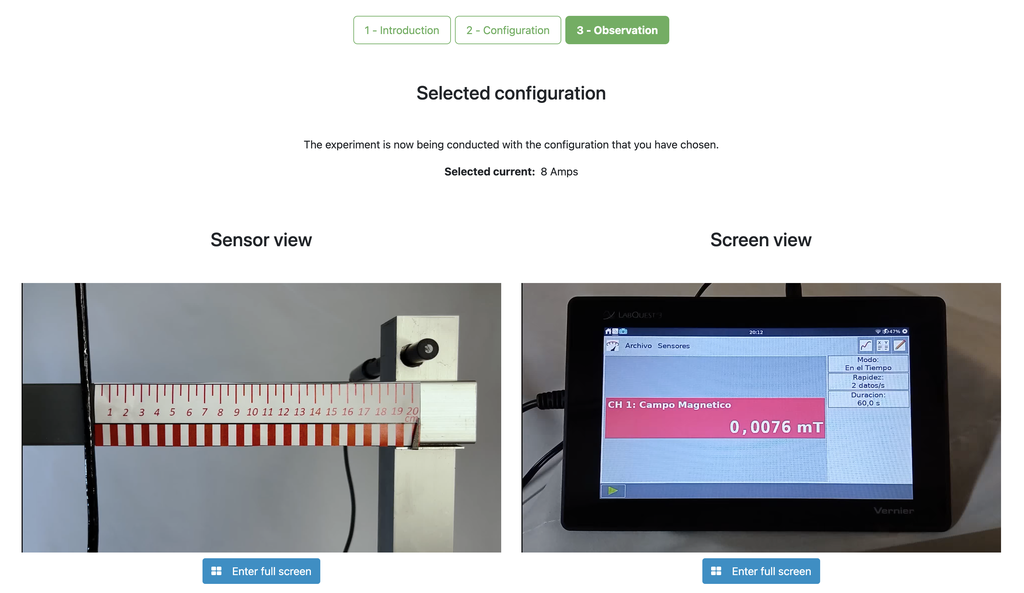
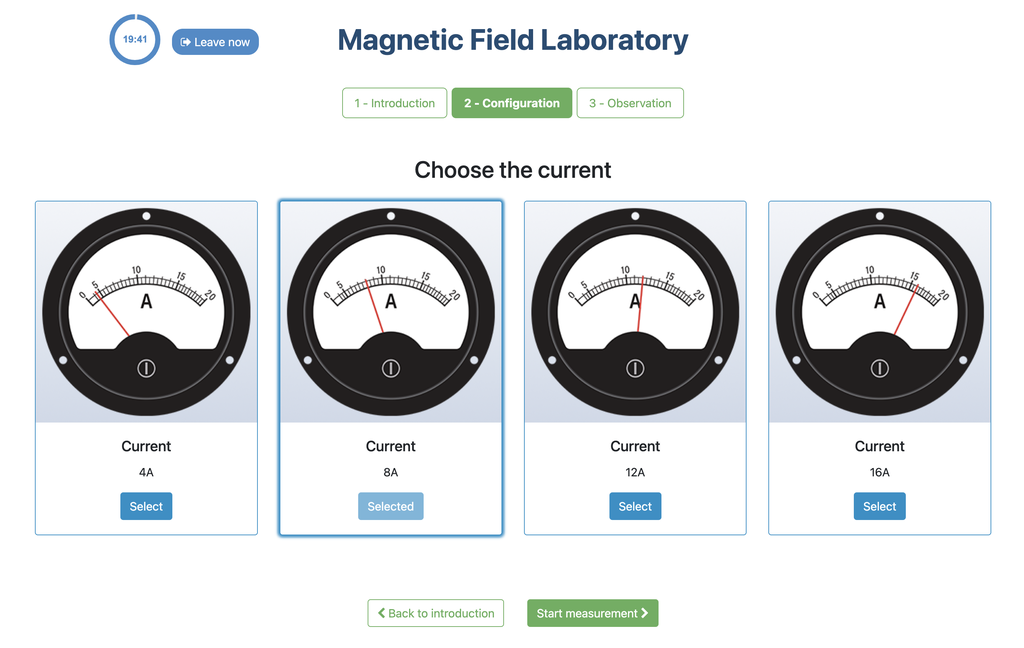
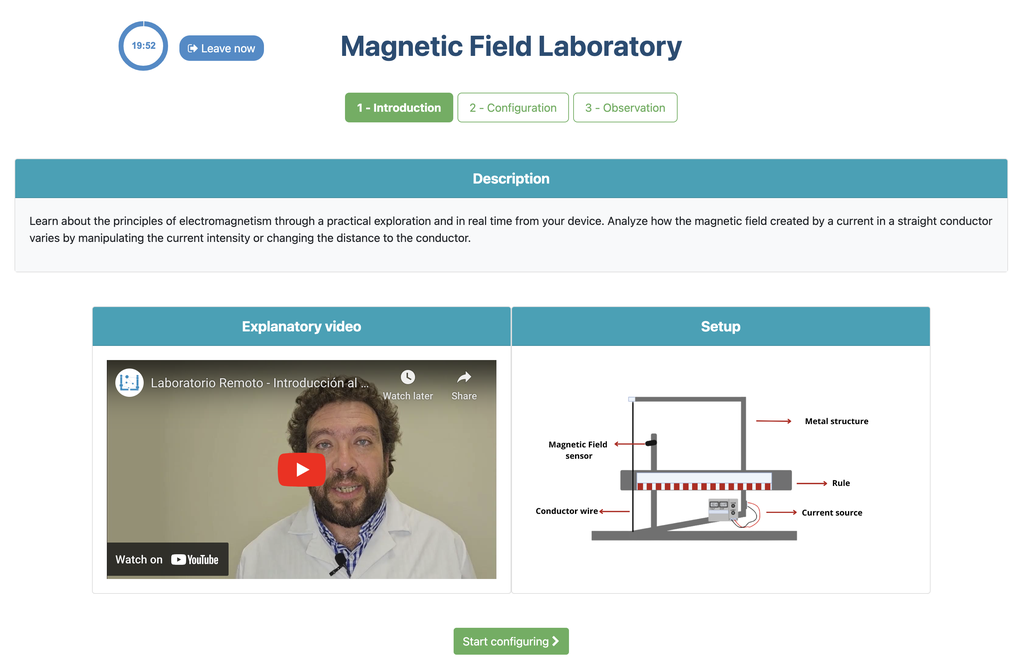
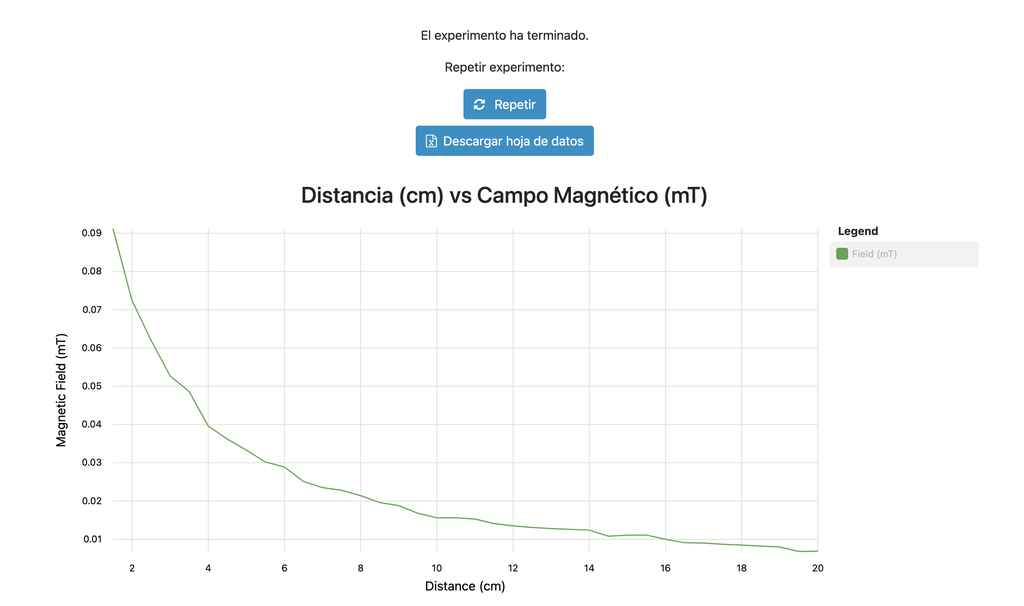
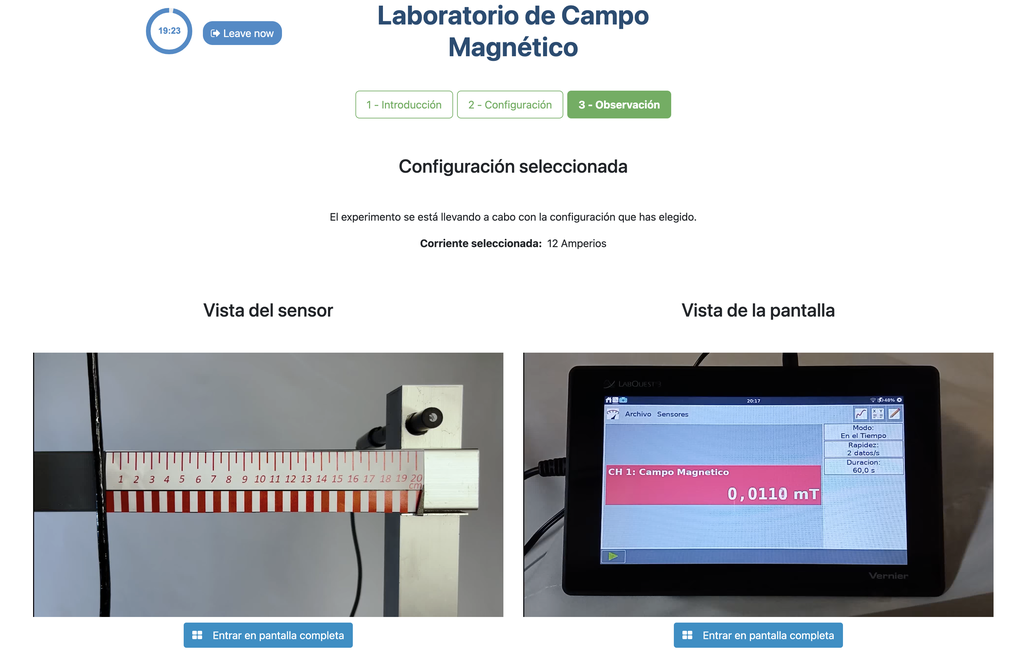
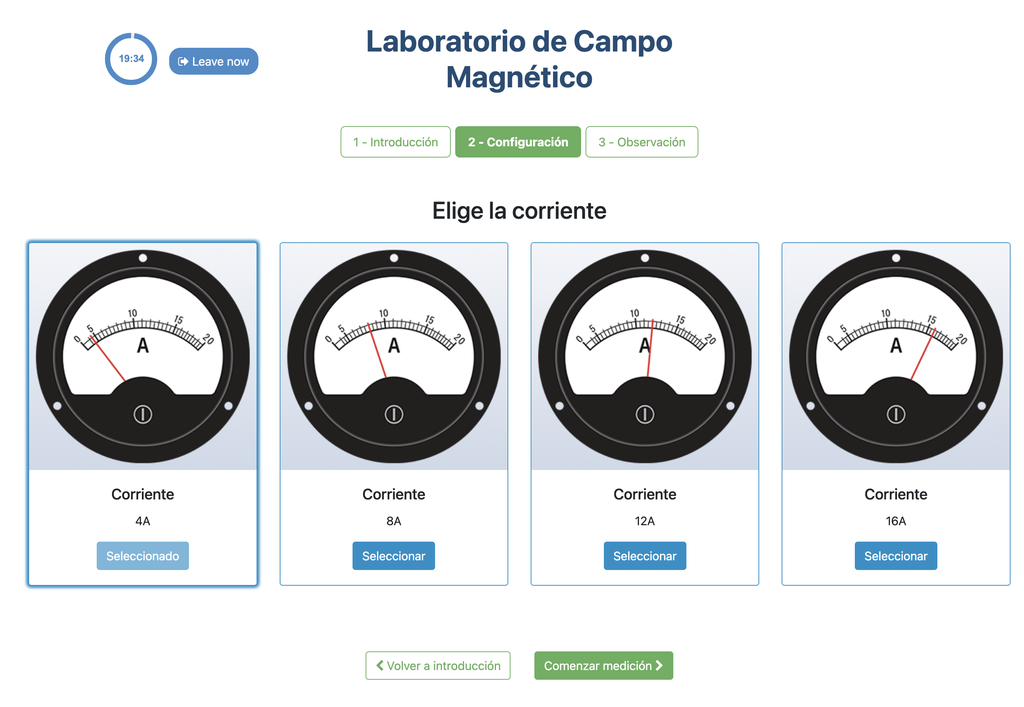
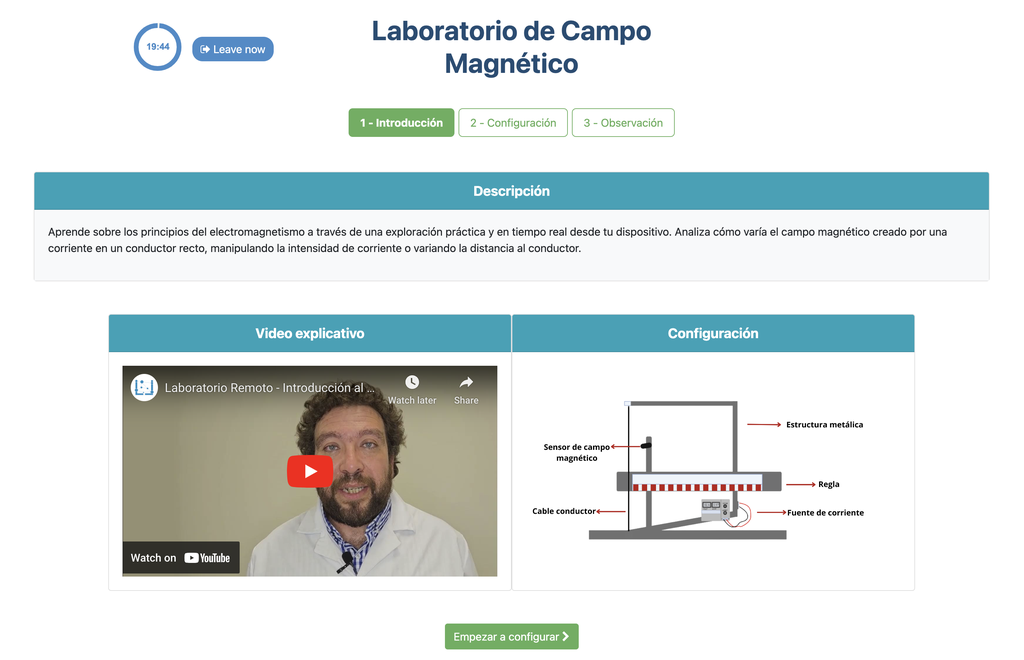
Materials
The Materials remote laboratory offers students the opportunity to explore the behavior and properties of different materials under various treatments and testing conditions—all from anywhere in the world. This lab is designed to provide hands-on experience with real materials and advanced testing equipment, enabling deep learning of material science concepts.
Materials and Treatments
Students can select from a range of materials, including:
- Steel
- Aluminum
- Copper
- Titanium
Each material supports multiple treatments, allowing students to experiment with heat treatment, surface finishing, and other processes to study how treatments affect material properties.
Testing Capabilities
Once materials and treatments are selected, students can perform a variety of industry-standard tests:
- Tensile Test: Evaluate the material's strength and ductility under tension.
- Notched Bar Impact Test: Measure material toughness and resistance to impact.
- Hardness Measurement: Determine the material's resistance to deformation or scratching.
- Microstructure Analysis: Analyze the internal structure of the material to understand grain size, phase distribution, and more.
Educational Benefits
This lab provides an ultraconcurrent experience, enabling multiple students to perform experiments simultaneously without compromising access or results. It integrates seamlessly into material science and engineering courses, offering hands-on experimentation that enhances theoretical learning.
With its advanced features and broad material selection, the Materials remote laboratory equips students with the skills and knowledge needed for modern materials engineering.
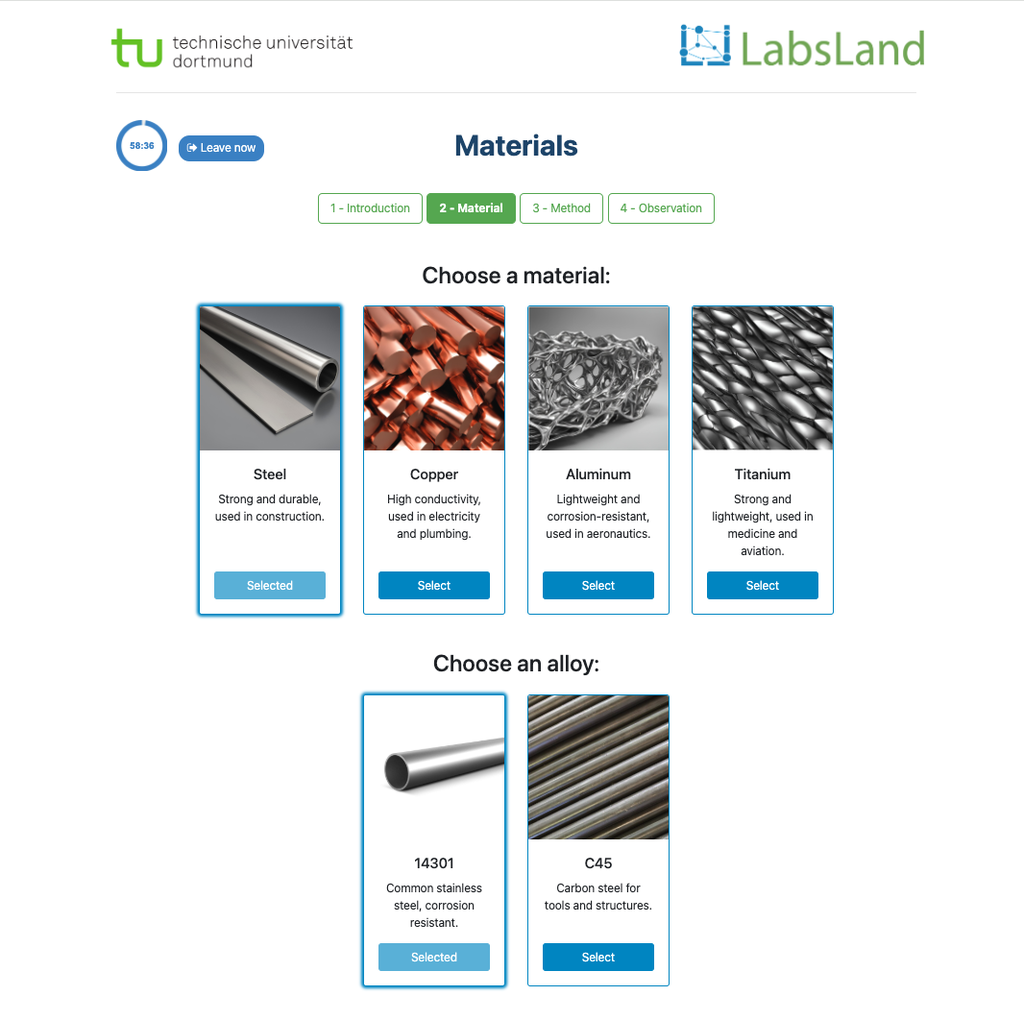
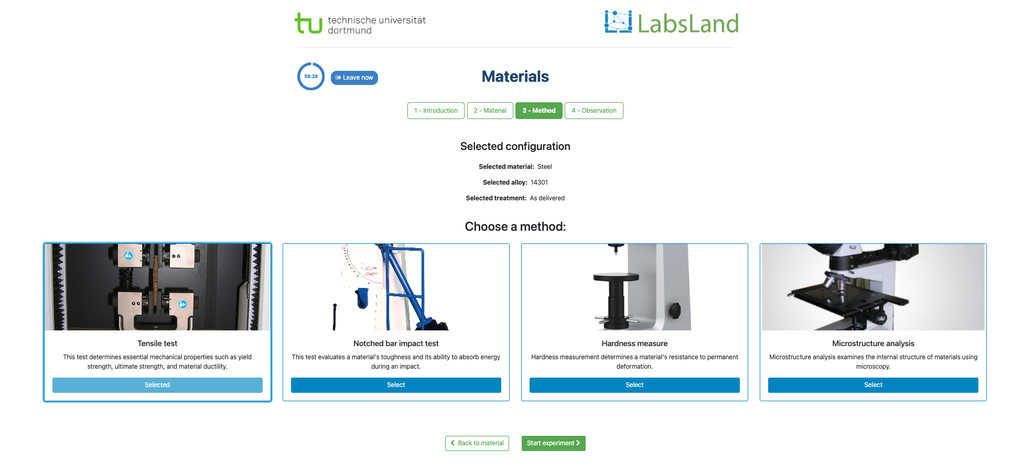
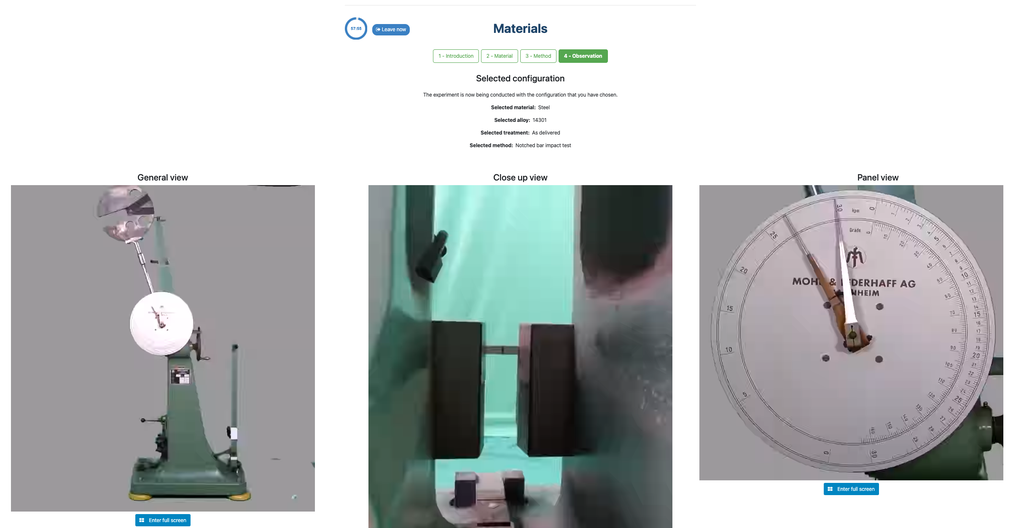
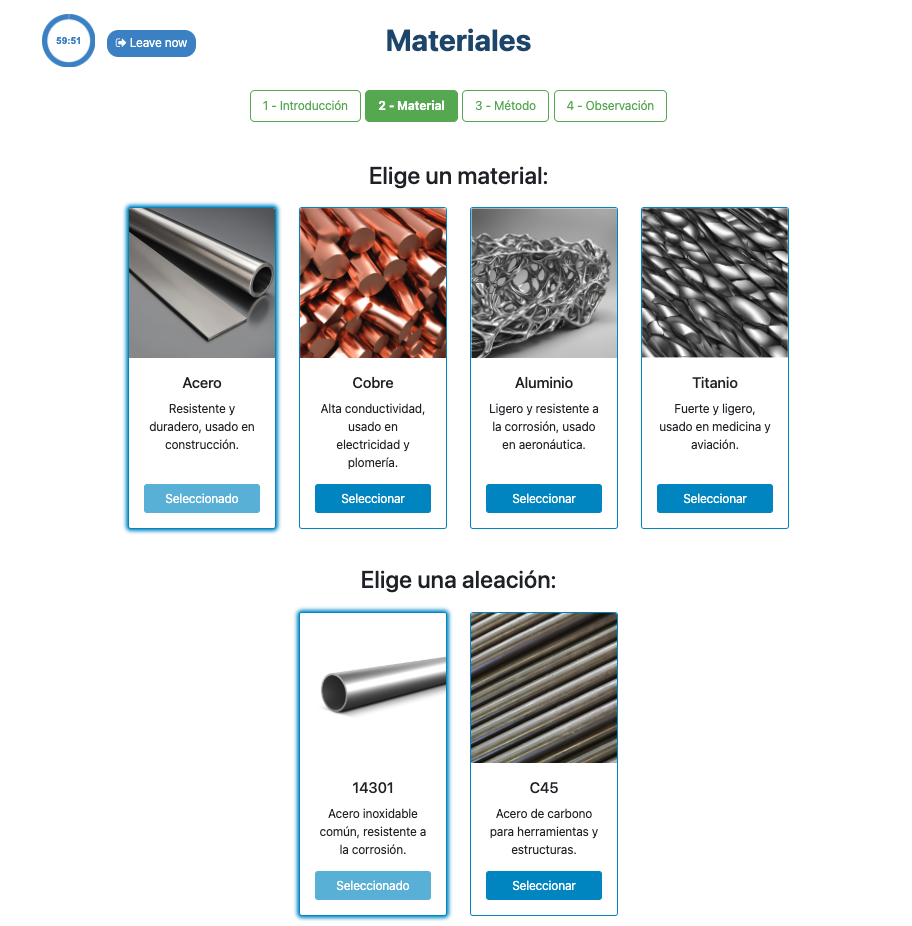
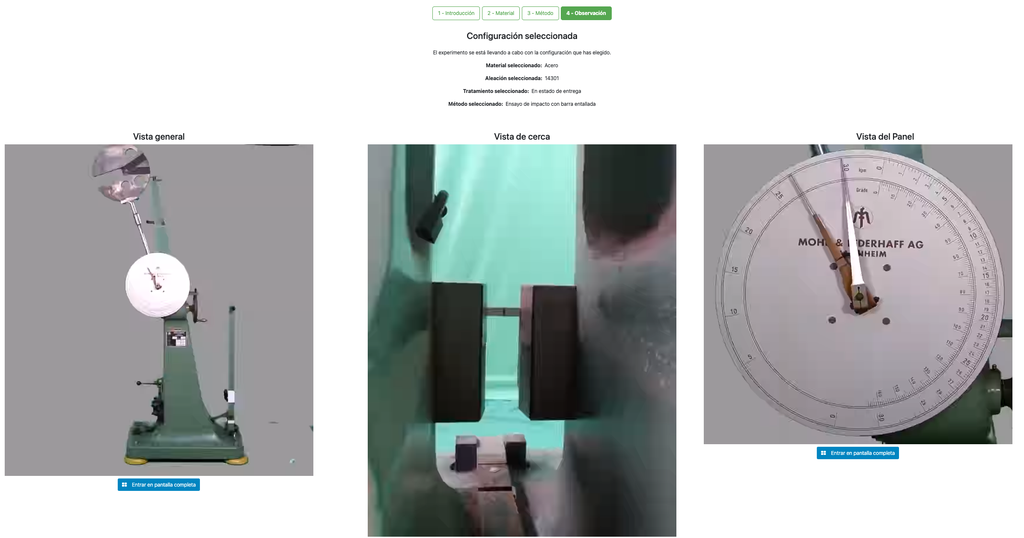
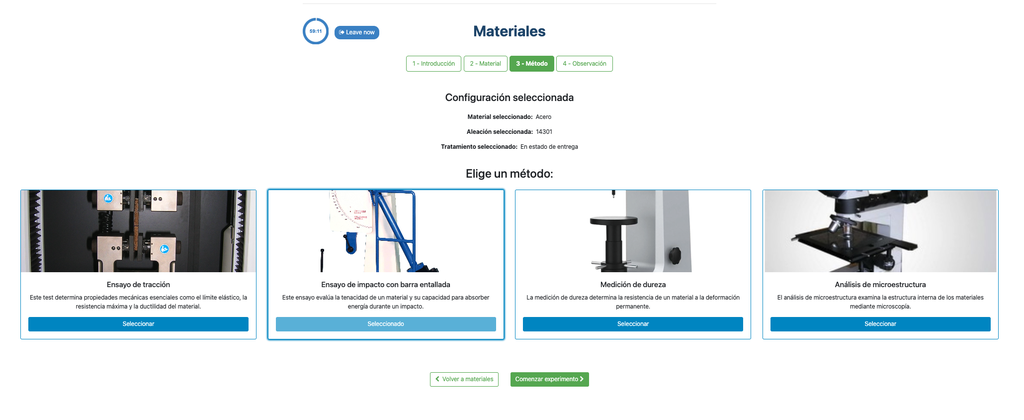
Pelton Turbine
Experiment with it by varying basic parameters such as the opening and the RPM and observe the output, generating electricity and measuring it.
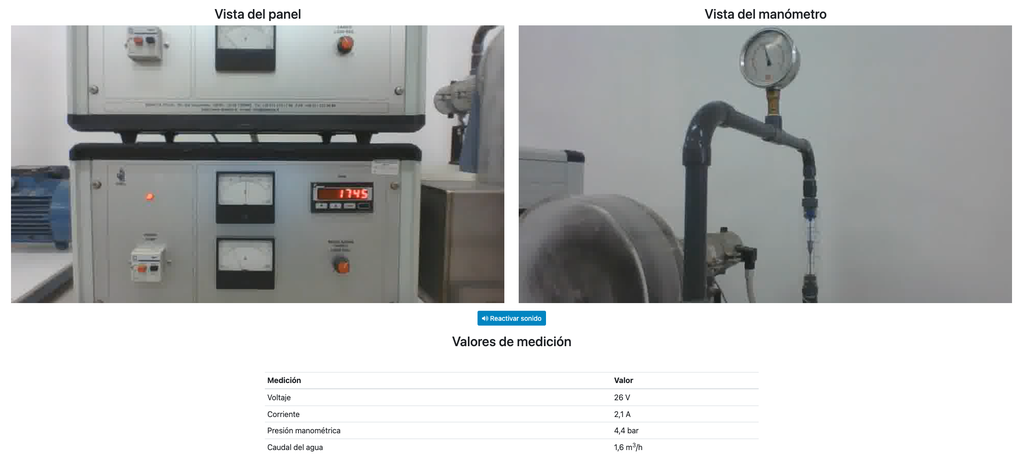
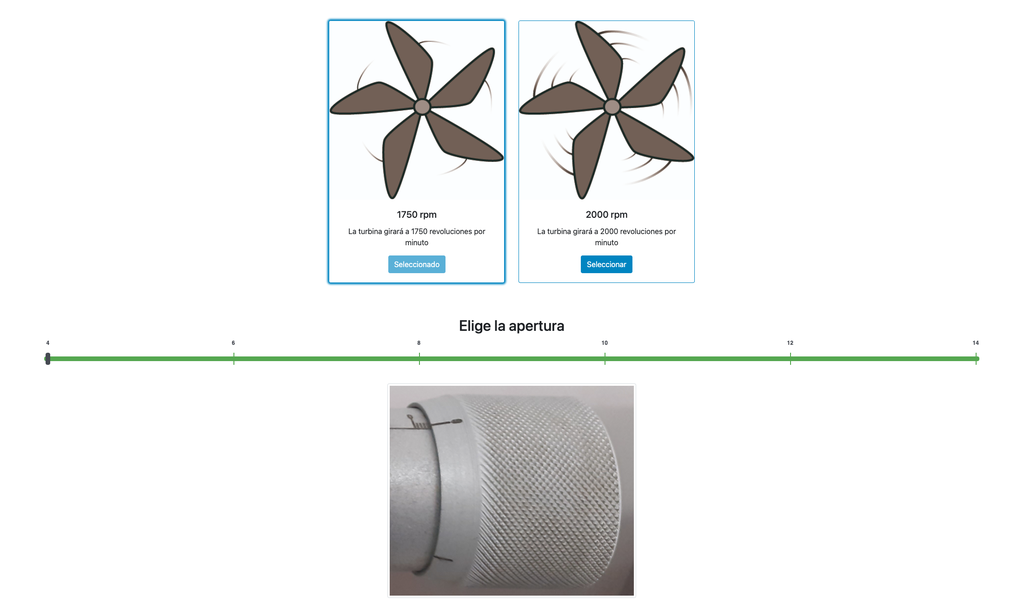
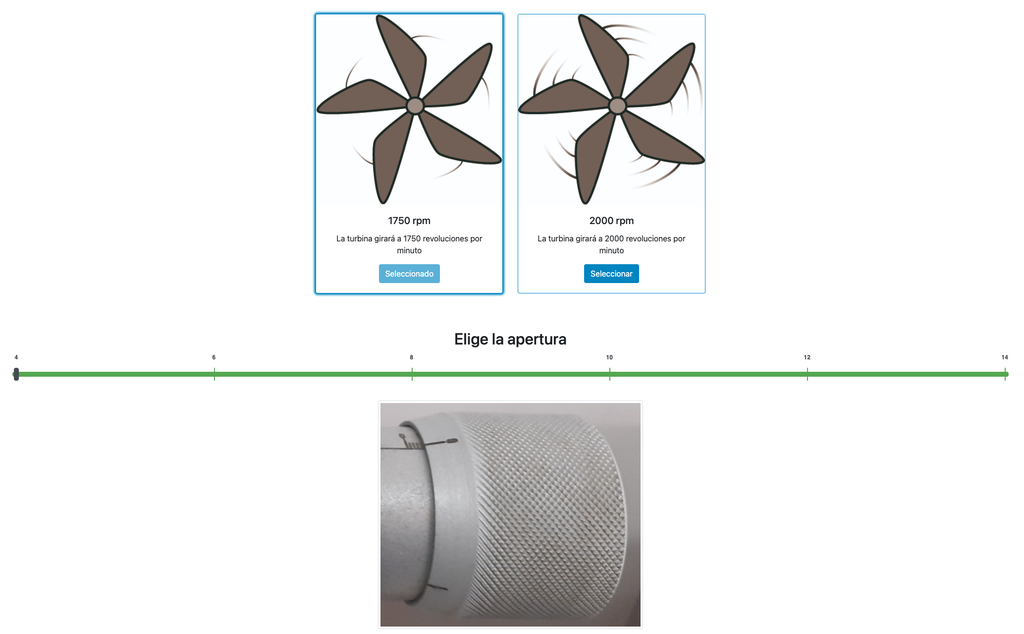
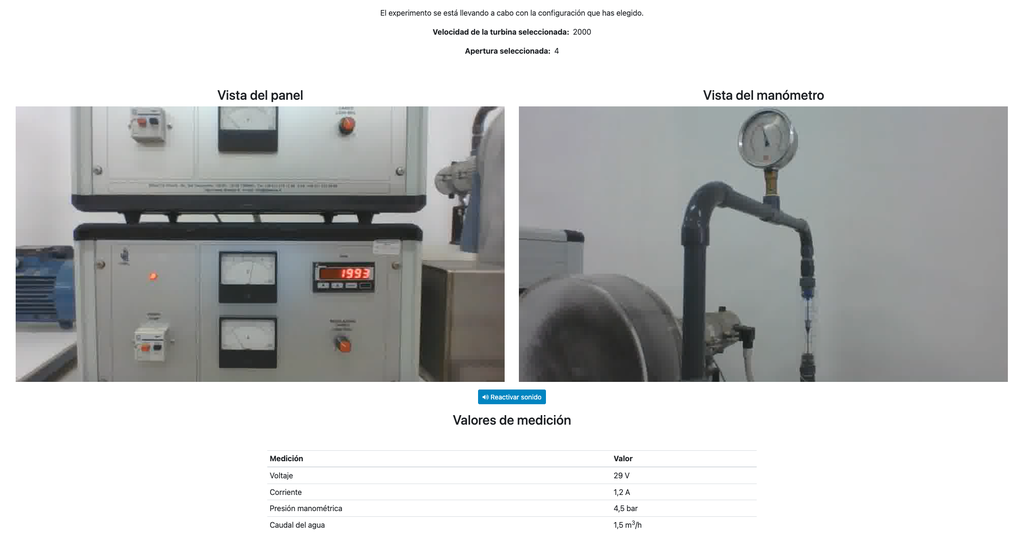
Spectroscopy
This ultraconcurrent laboratory is based in an experimental practice about X-ray spectroscopy using a LEYBOLD-brand device that is installed in a radiological instrumentation laboratory in the National University of Costa Rica (Universidad Nacional de Costa Rica), located in the Applied Medical Physics building.
The assembly consists of an X-ray tube with a gold (Au) anode, together with a scintillation detector configured with a preamplifier and a digitizer that allows processing information from the measurements made by the detector through software.
The test aims to characterize the beam of the radiation source through the experimental calculation of the spectrum of the X-ray beam produced in the tube, in addition to generating basic notions about radiological instrumentation and how the variation of its parameters is used in industrial and medical applications.
Texture Analyzer
In this laboratory you will be able to work with a texture analyzer (a texturometer) to determine the rheological characteristics associated to the maturation process of fruits and vegetables. You will be able to use this laboratory instruments to analyse the texture of fresh and processed foods and of industrial products. It allows the measurement of various physical parameters.
The texture profile analysis (TPA) is based on sensorial evaluations to detect and eliminate defects. Furthermore, it is used as a research method and for the learning of science, technology and foods.
A robotic arm of the texture analyzer applies the force necessary for the analysis. The robotic arm is coupled with a puncture or compression probe, depending on the required analysis. A platform holds the sample and supports the interaction of the probe with the selected fruit or vegetable. That way, the analytical signal is obtained. The signal is expressed as a force dependant on the time. That way, it is possible to correlate the graphics with various maturation states, and to conclude about the chemical transformations that affect the fruit or vegetable after the harvest.
